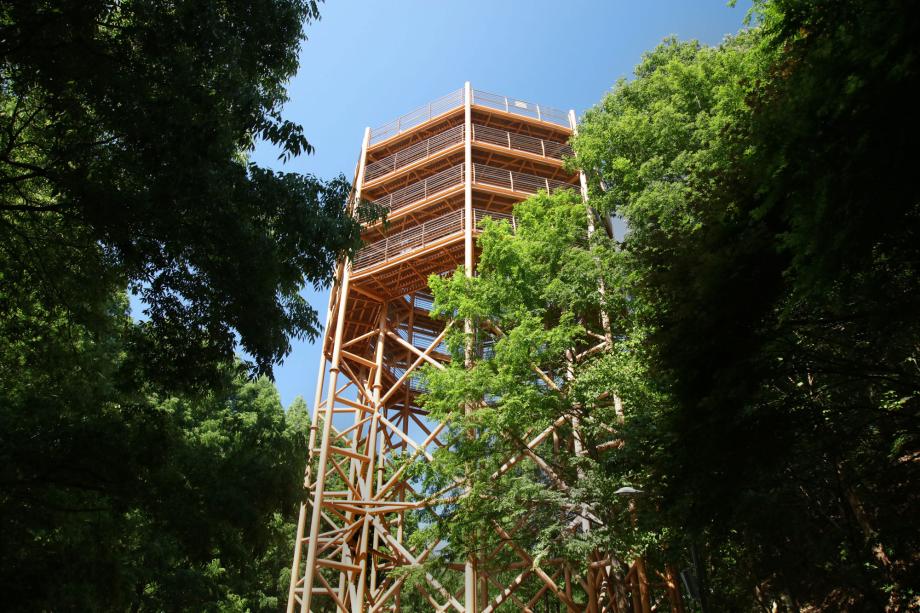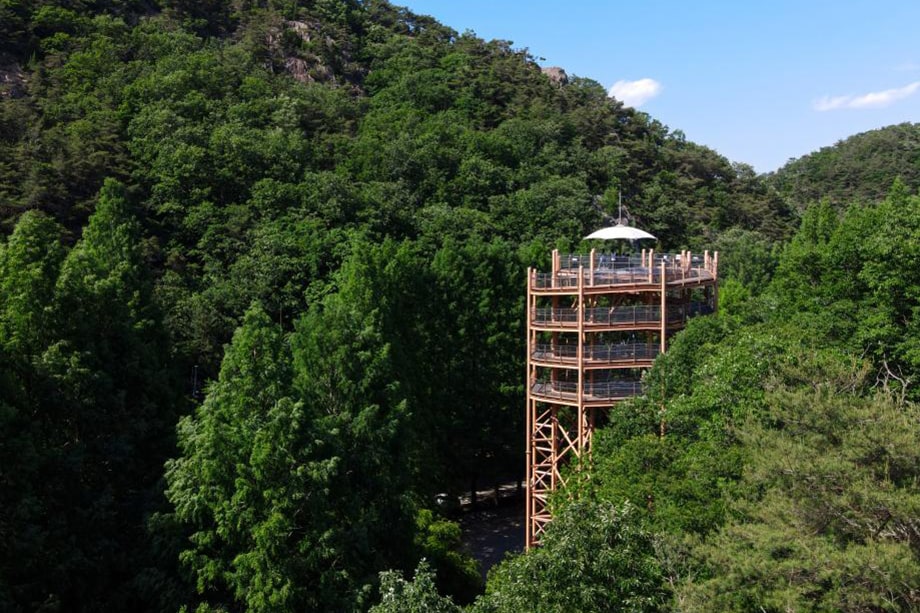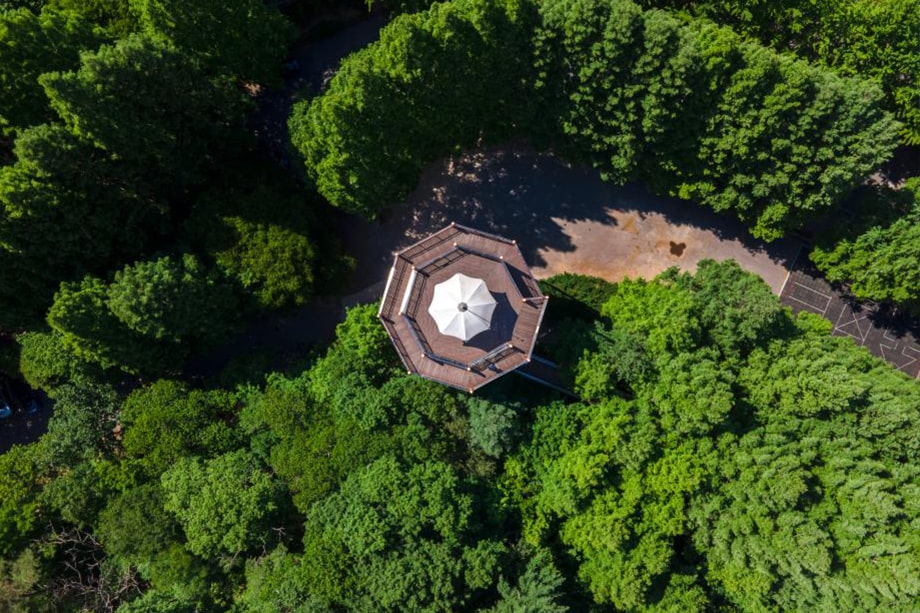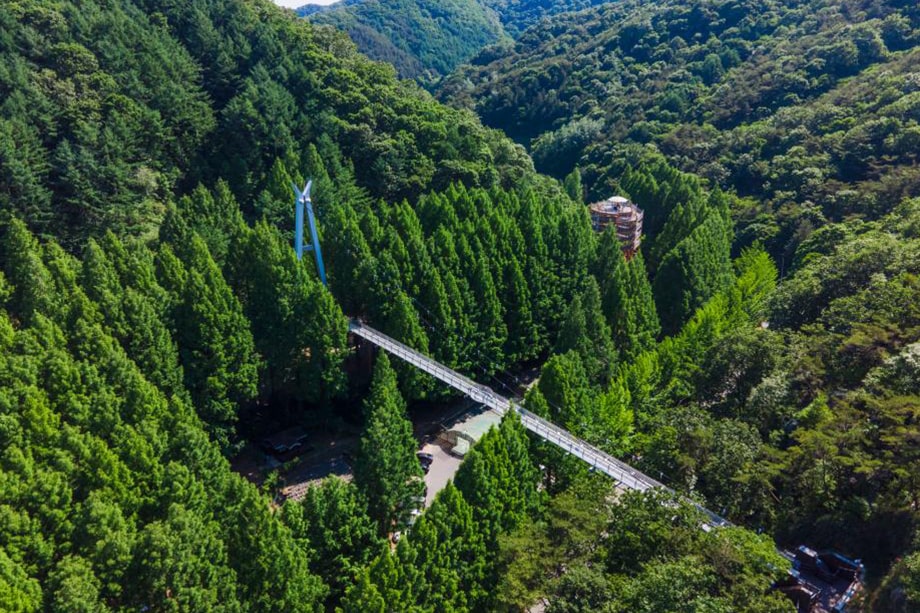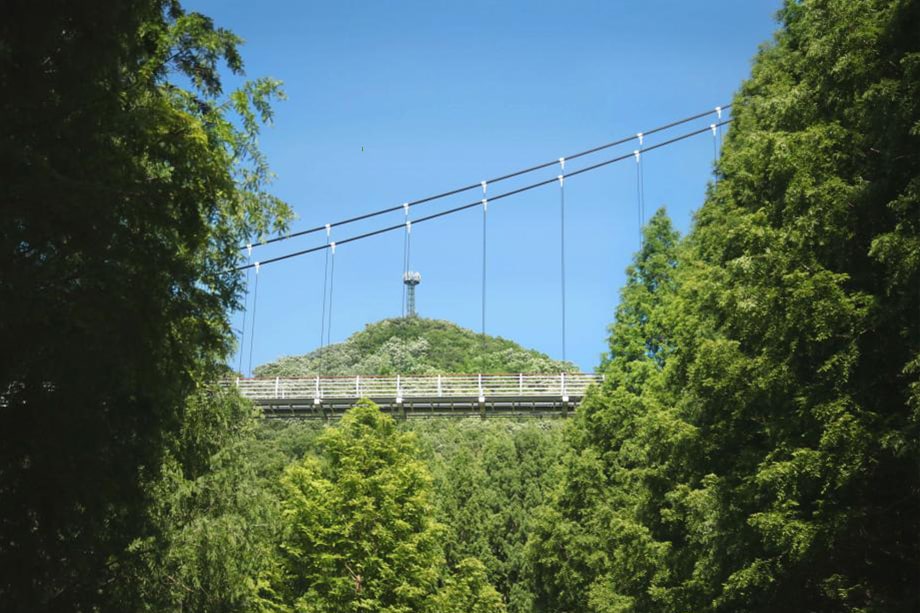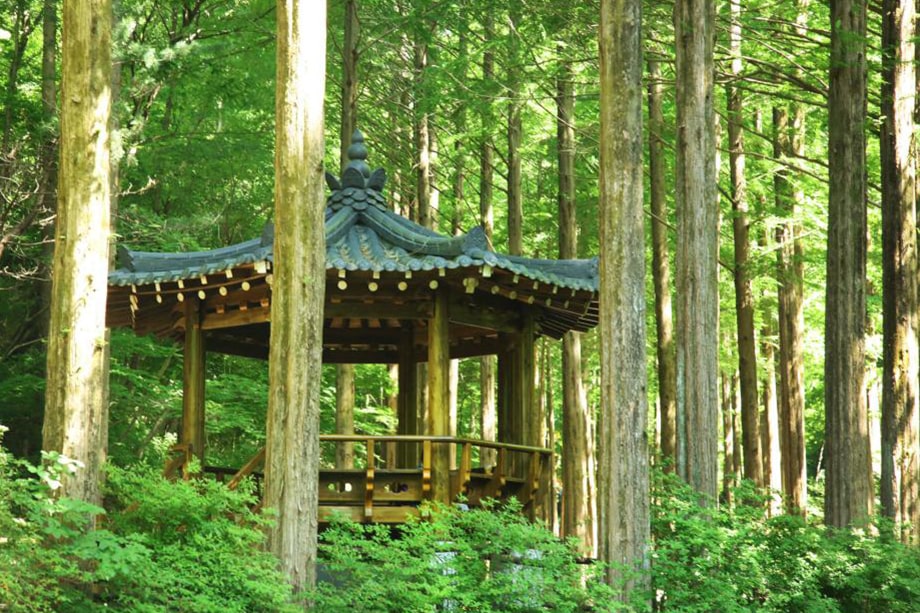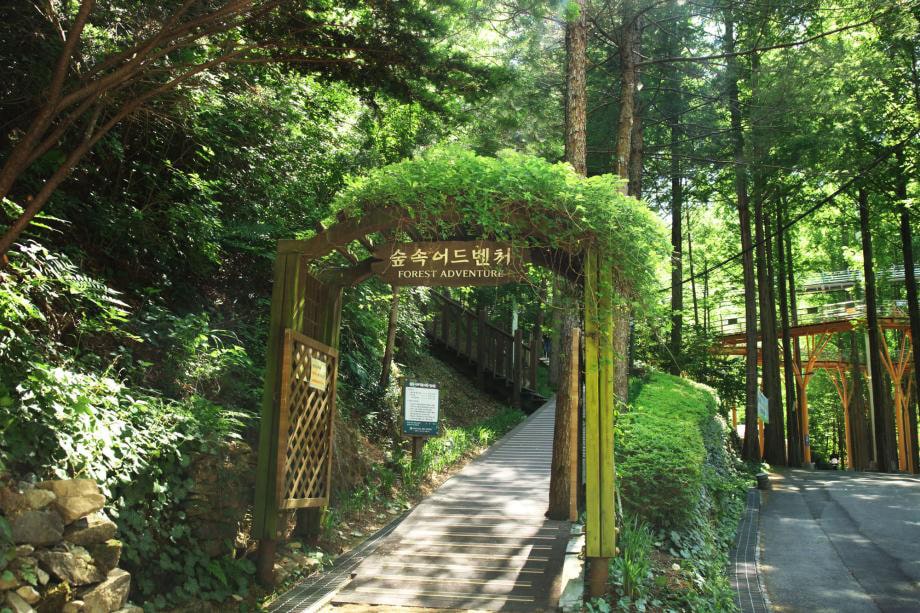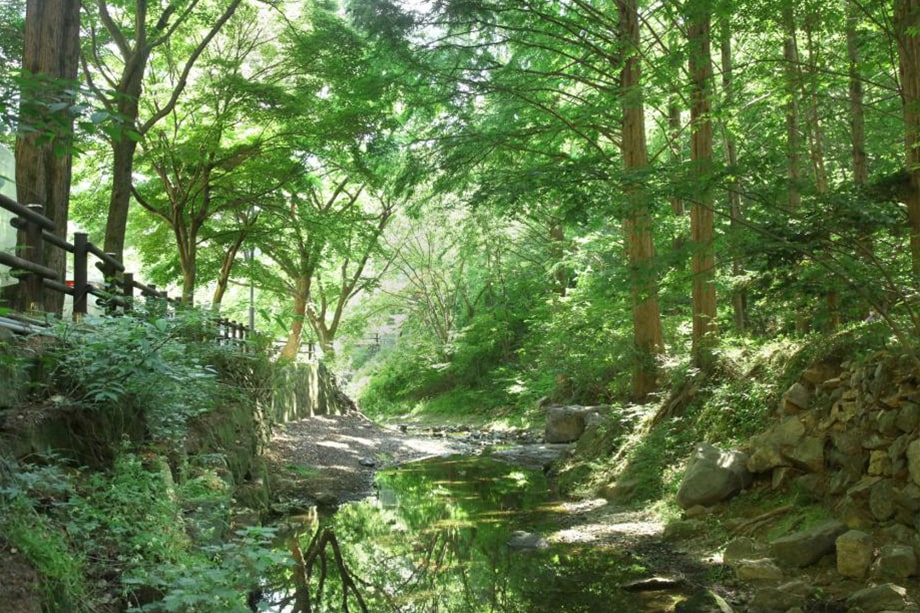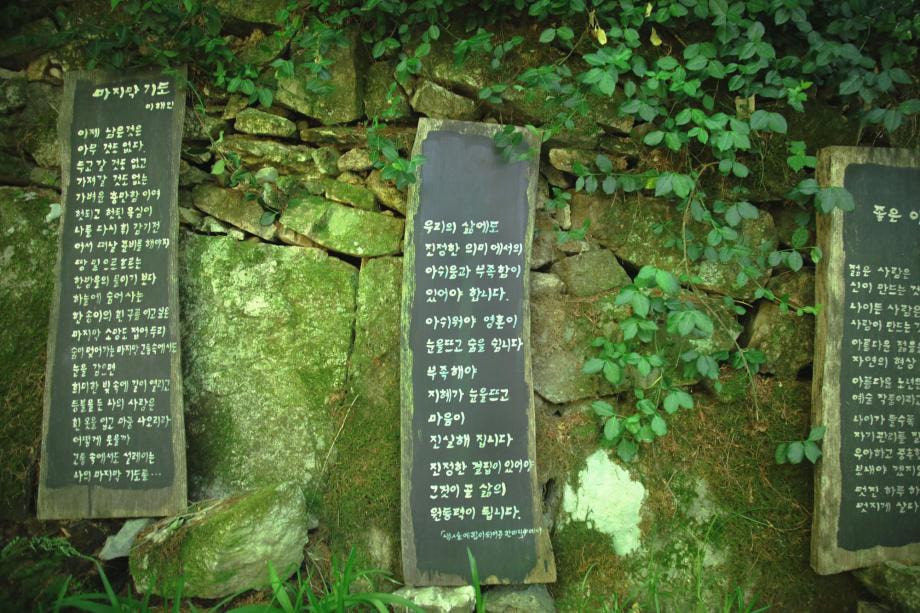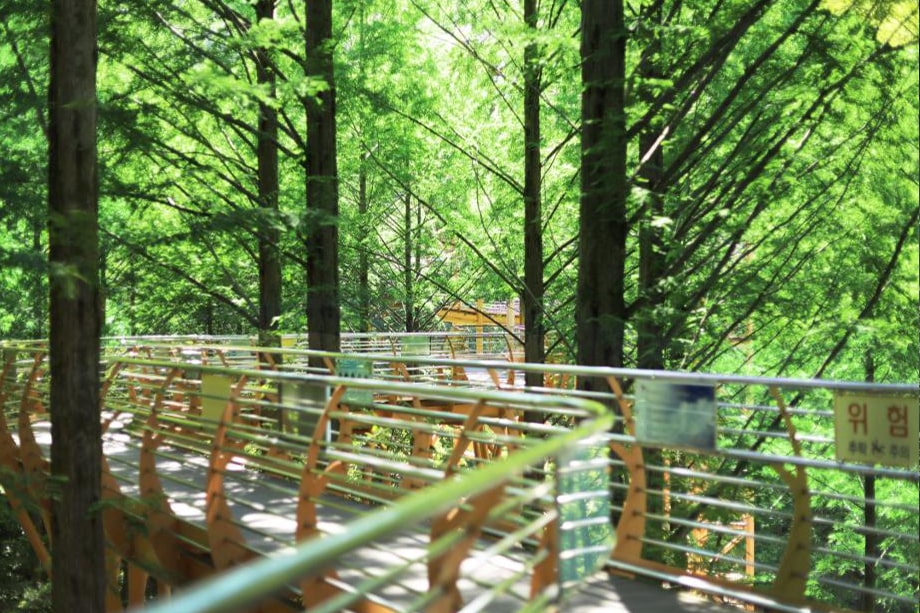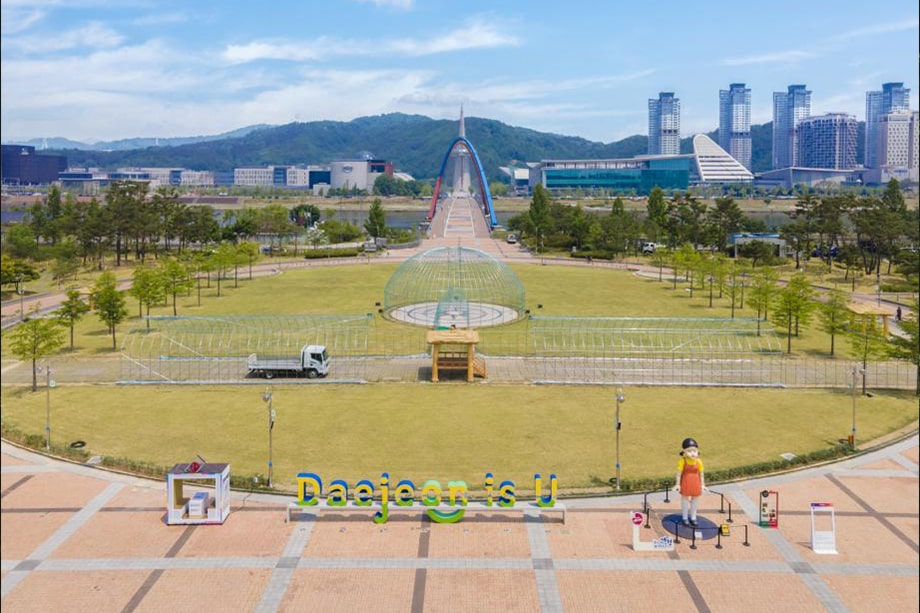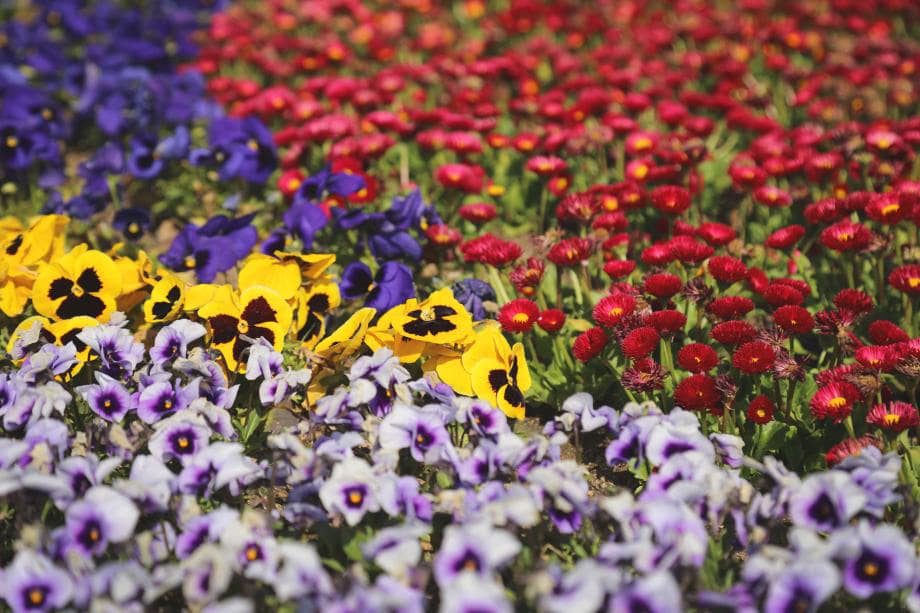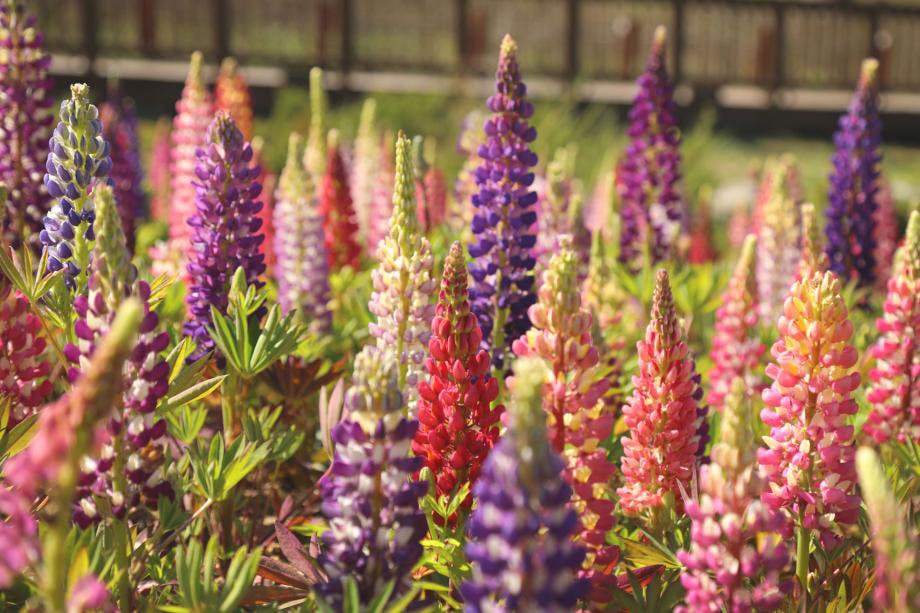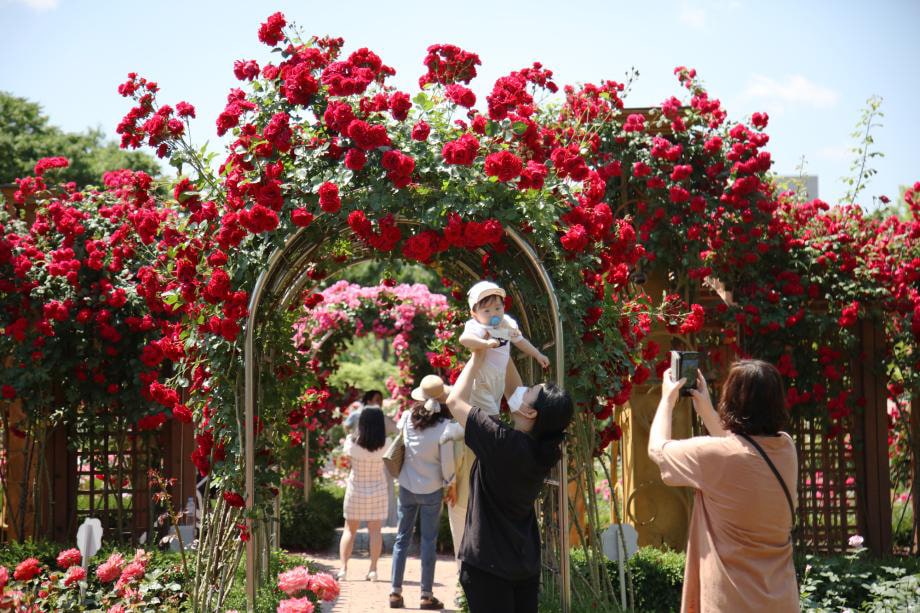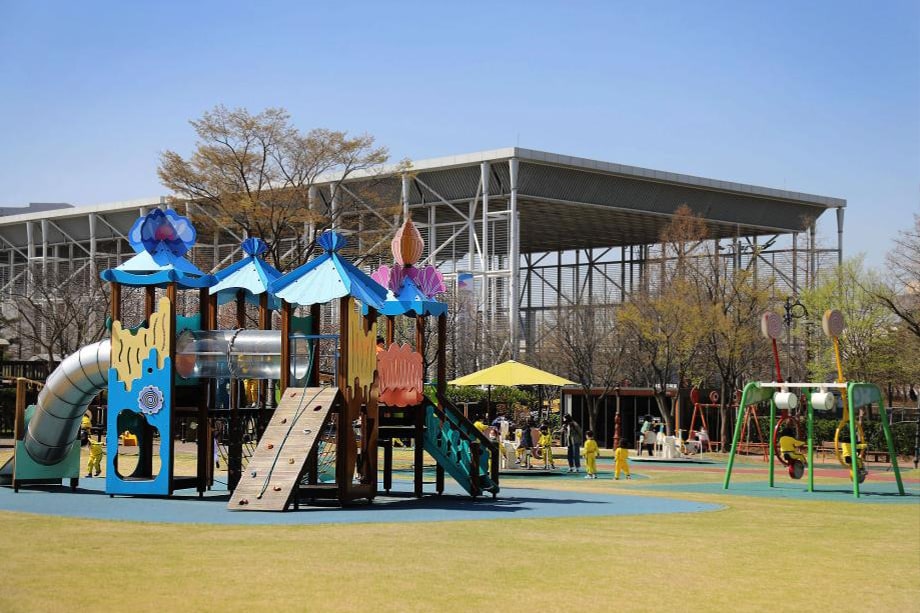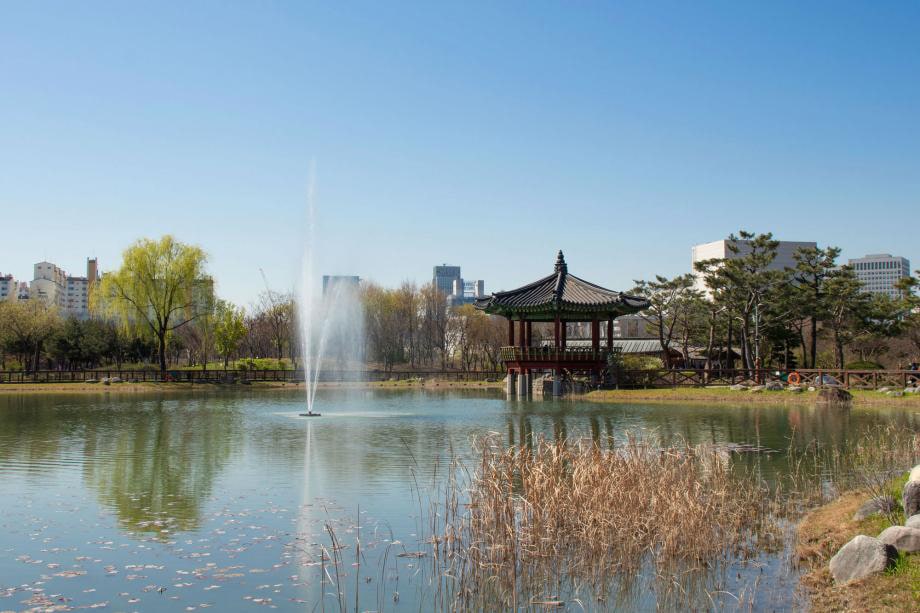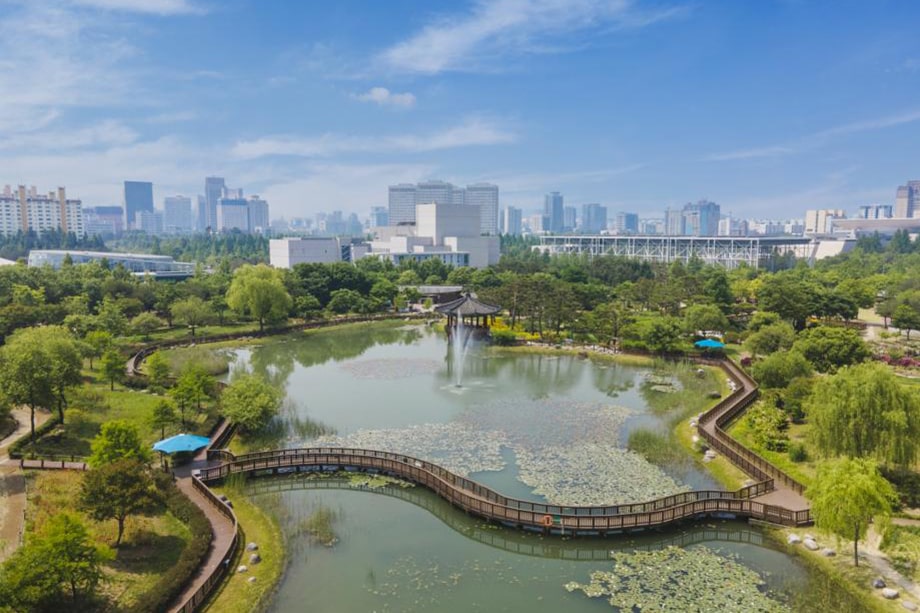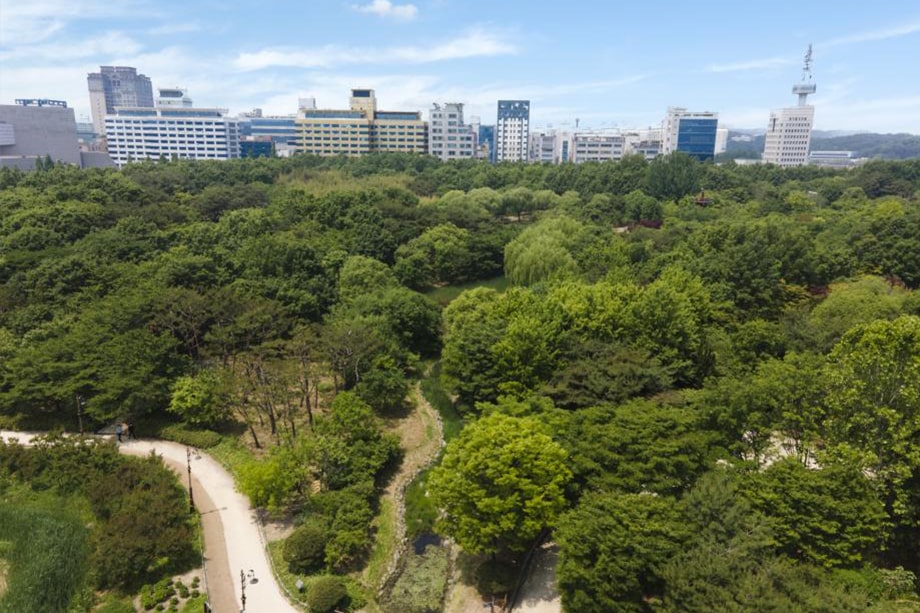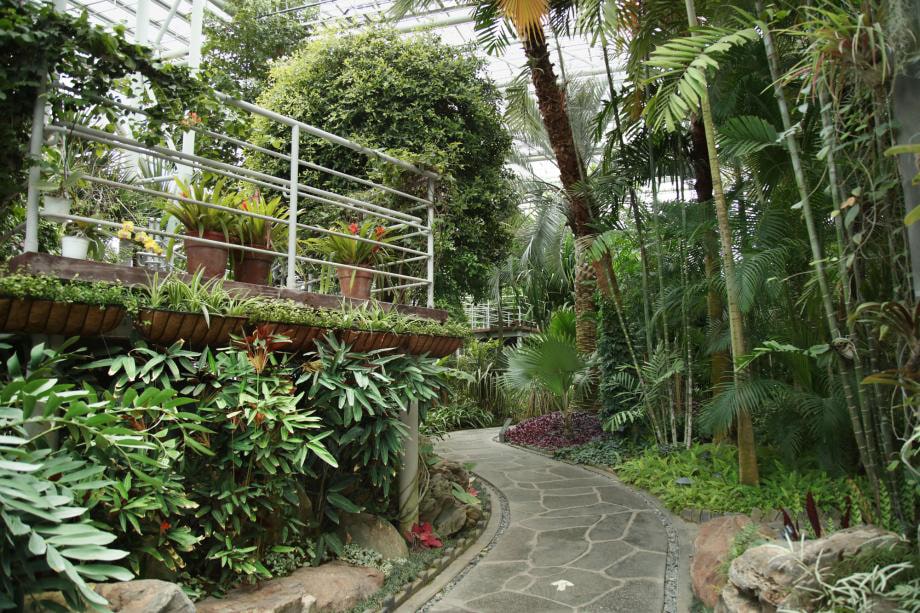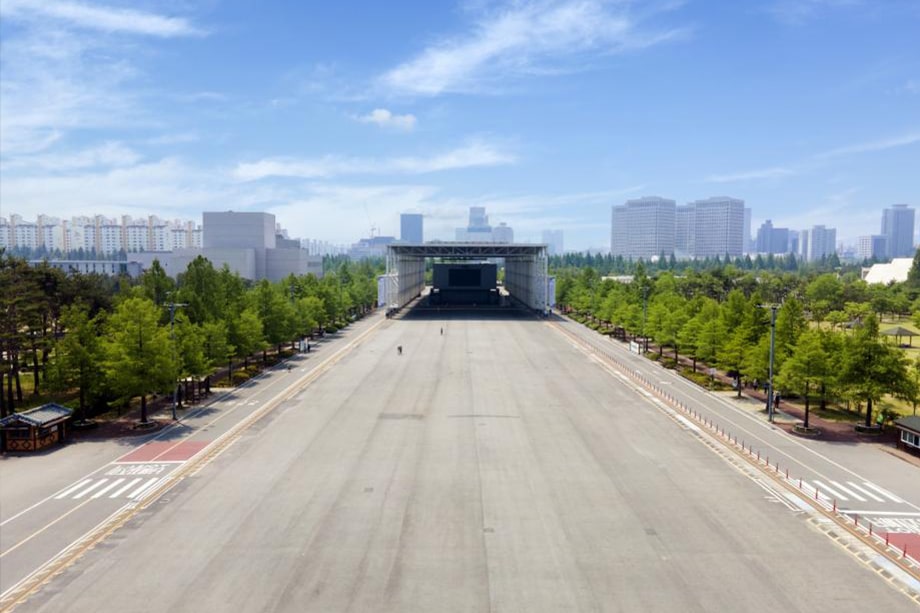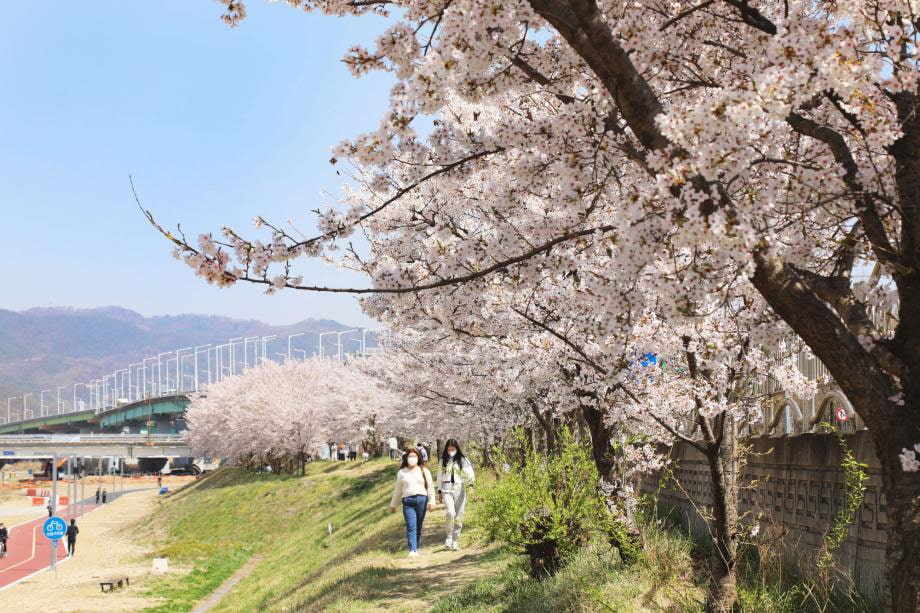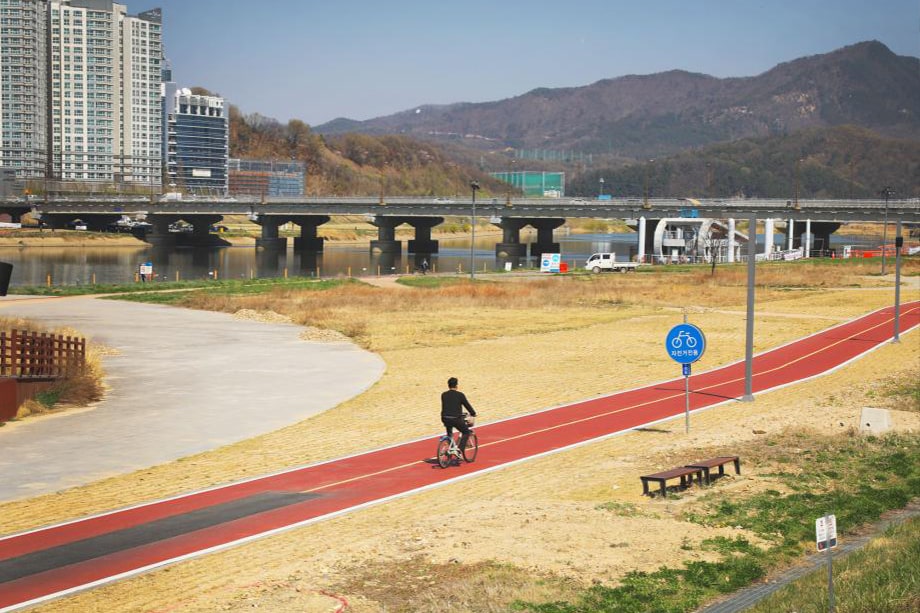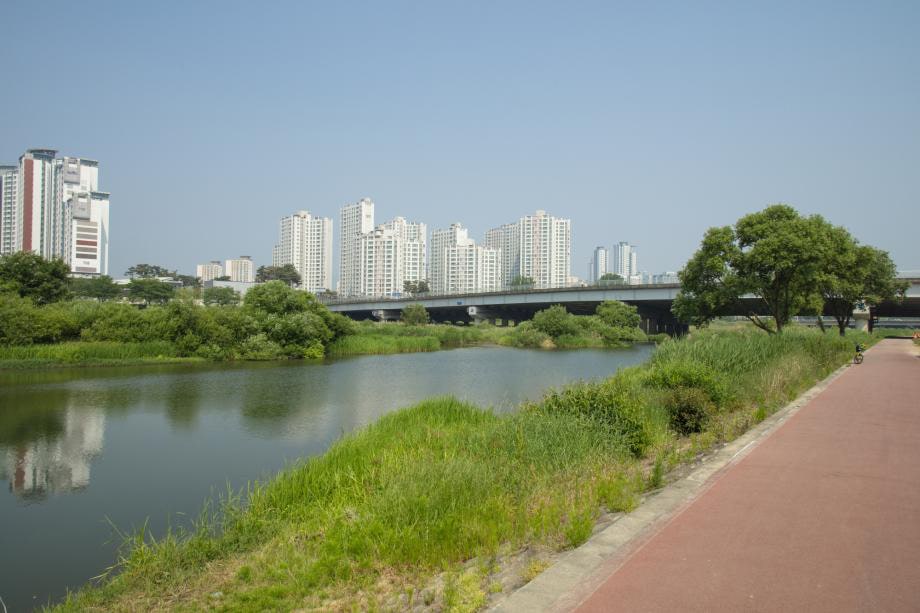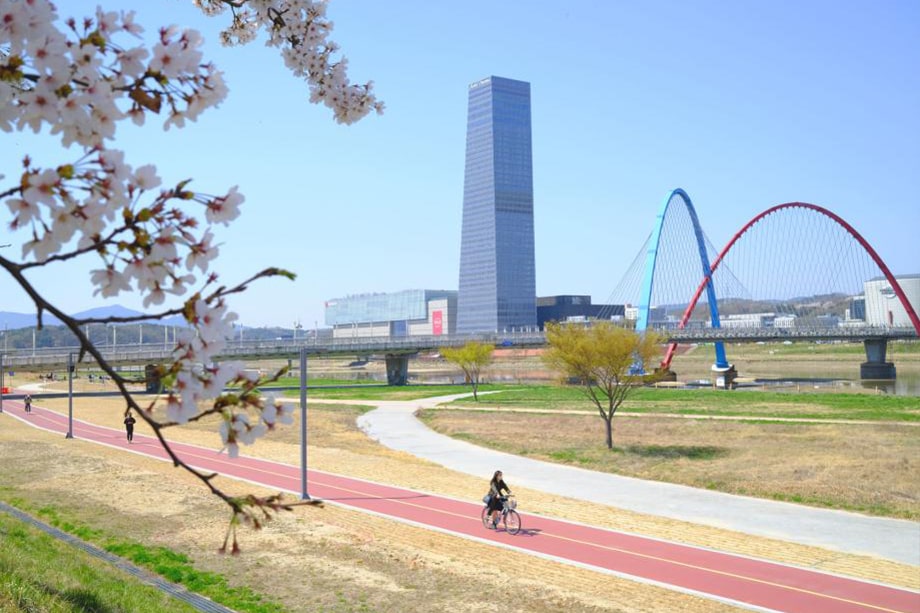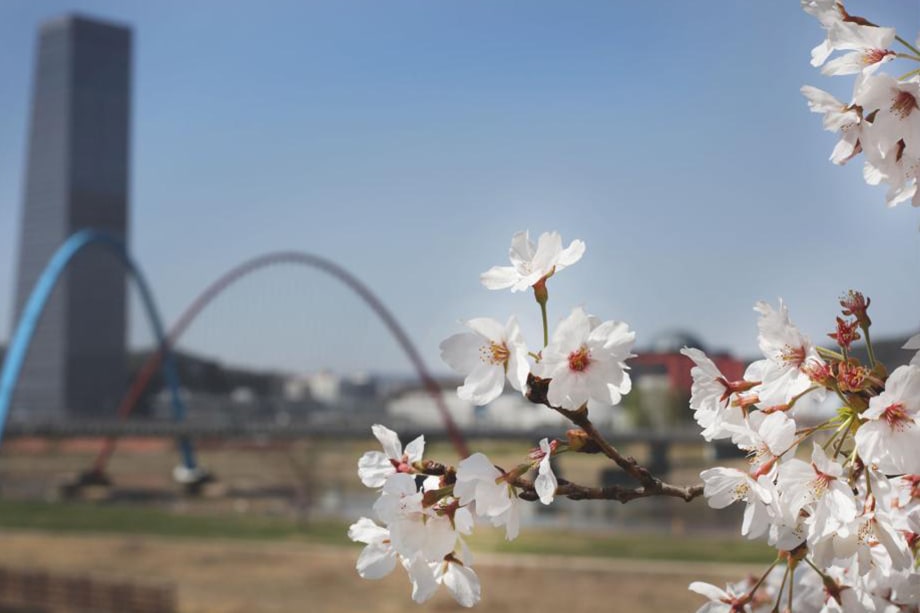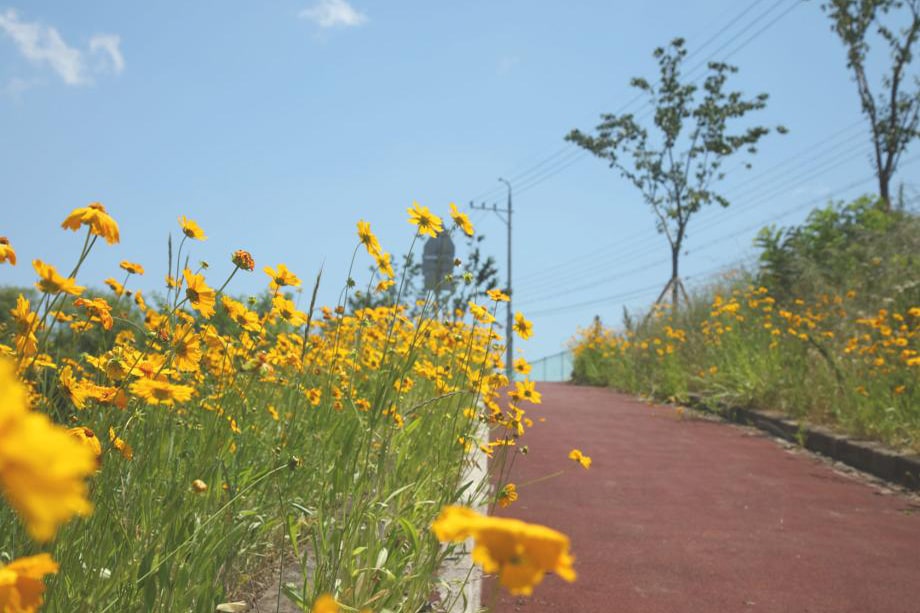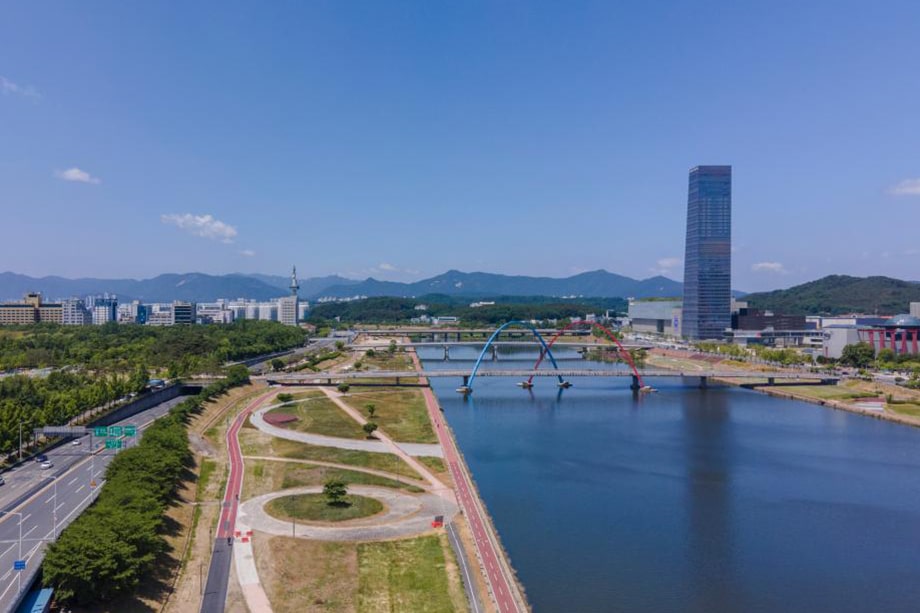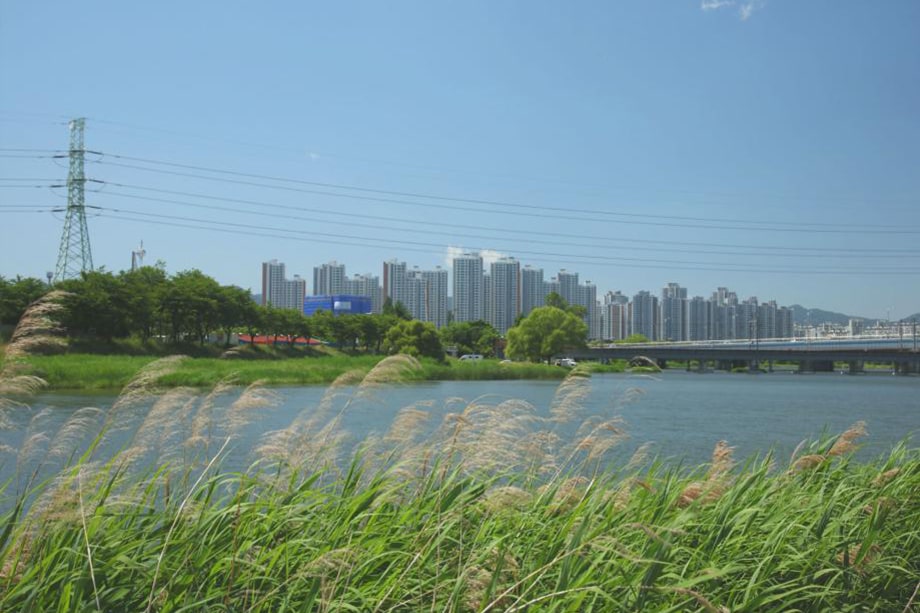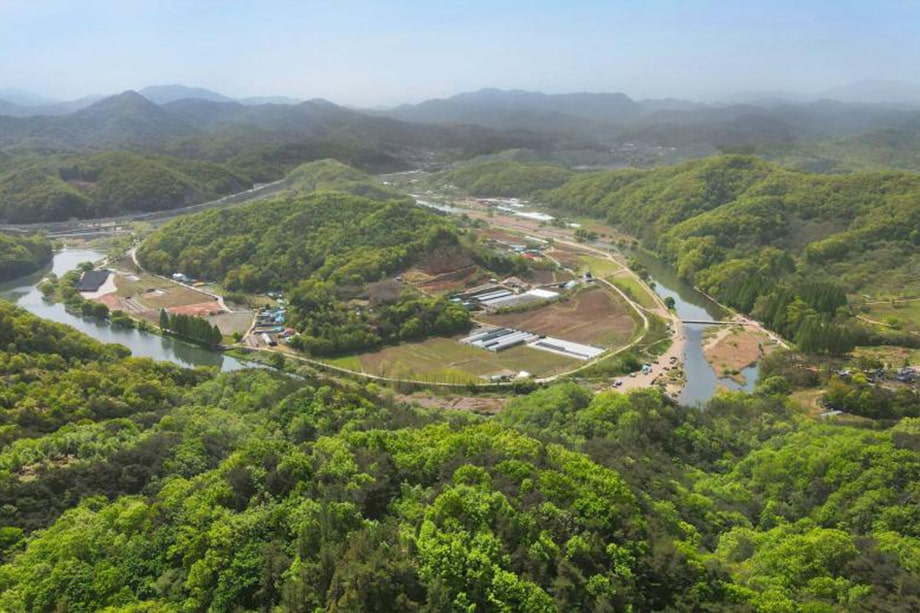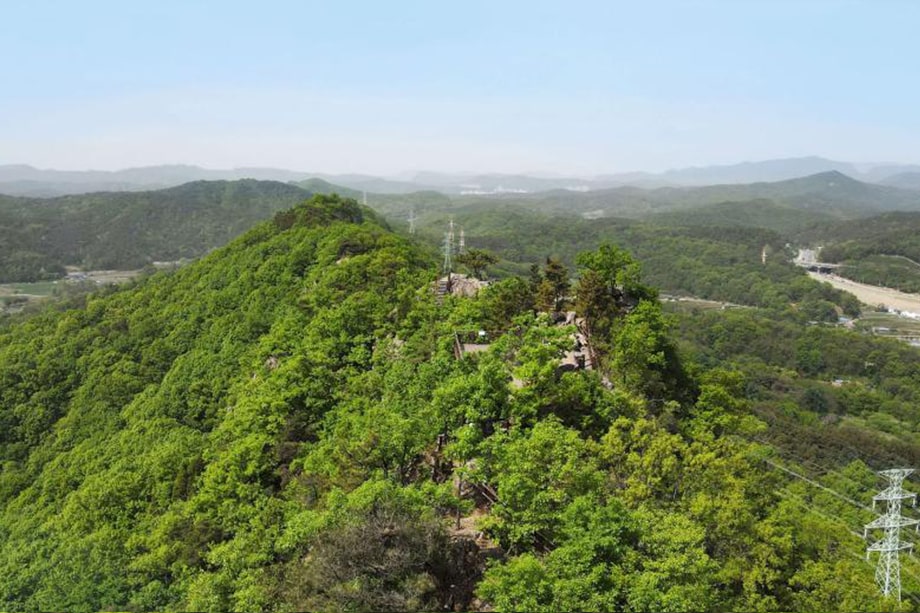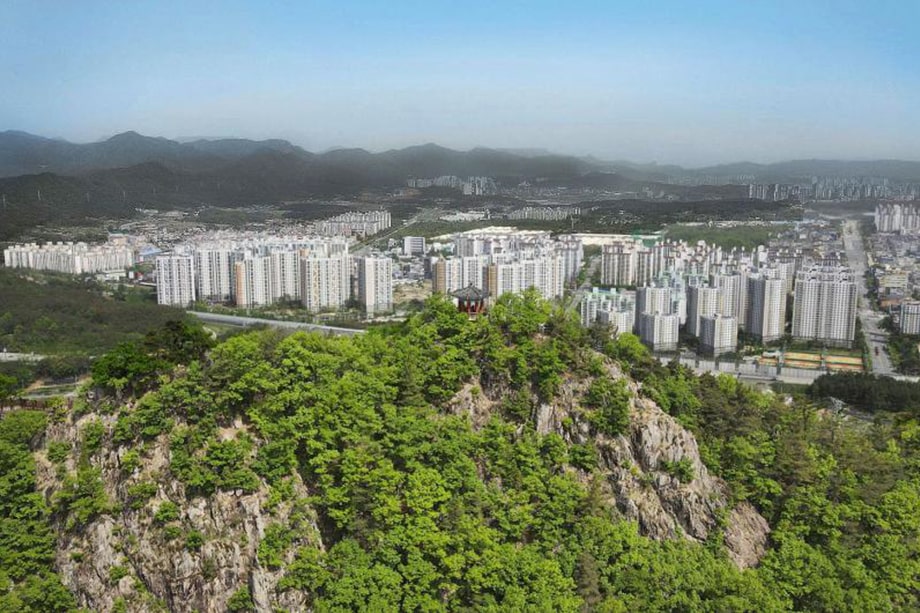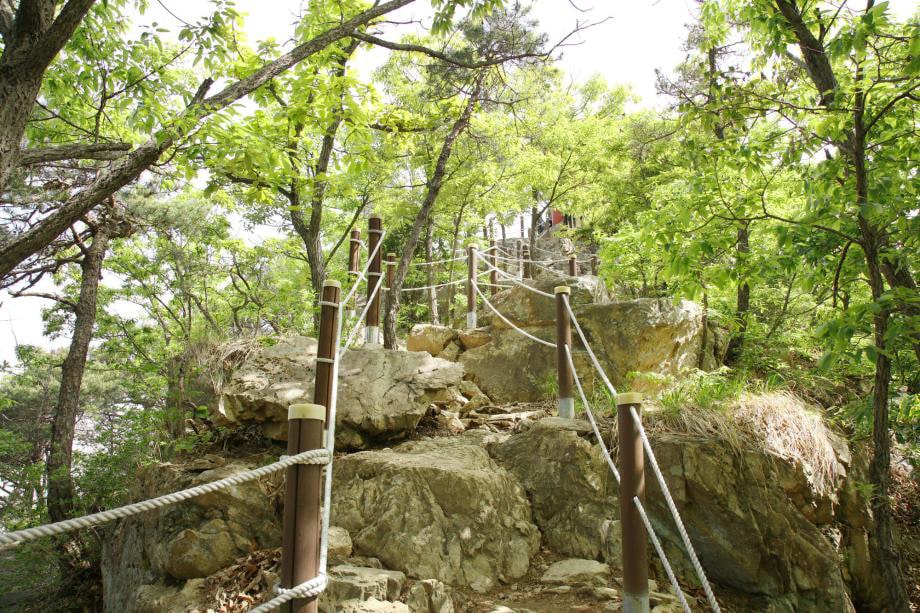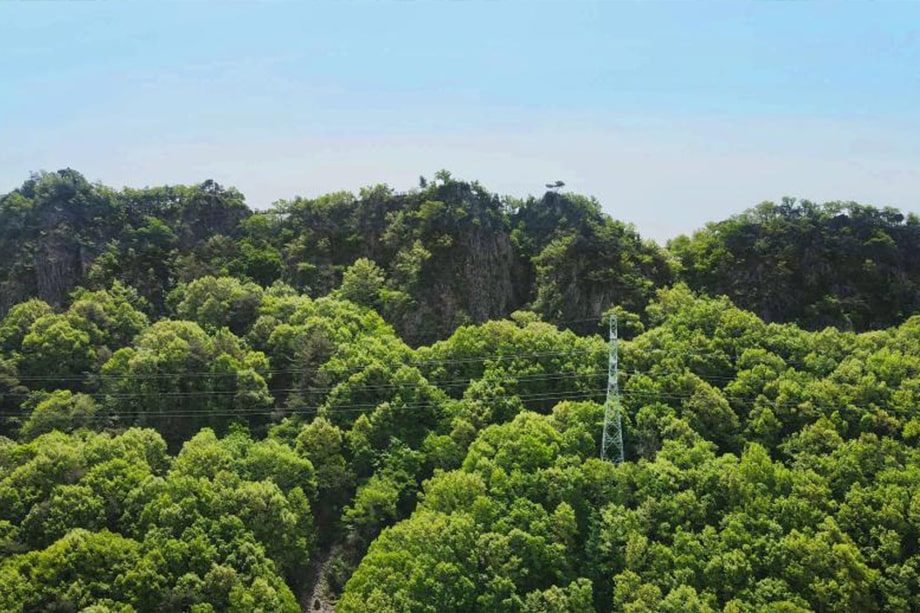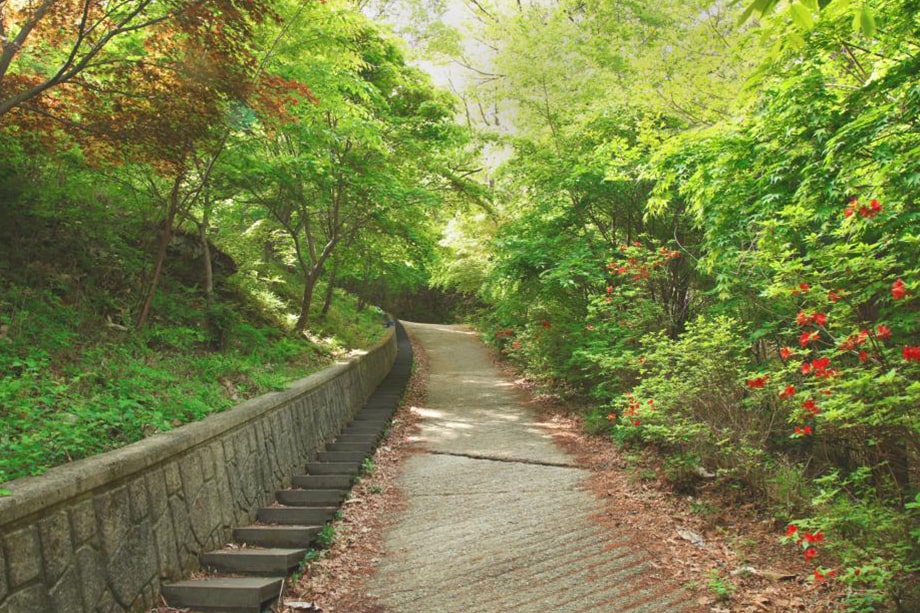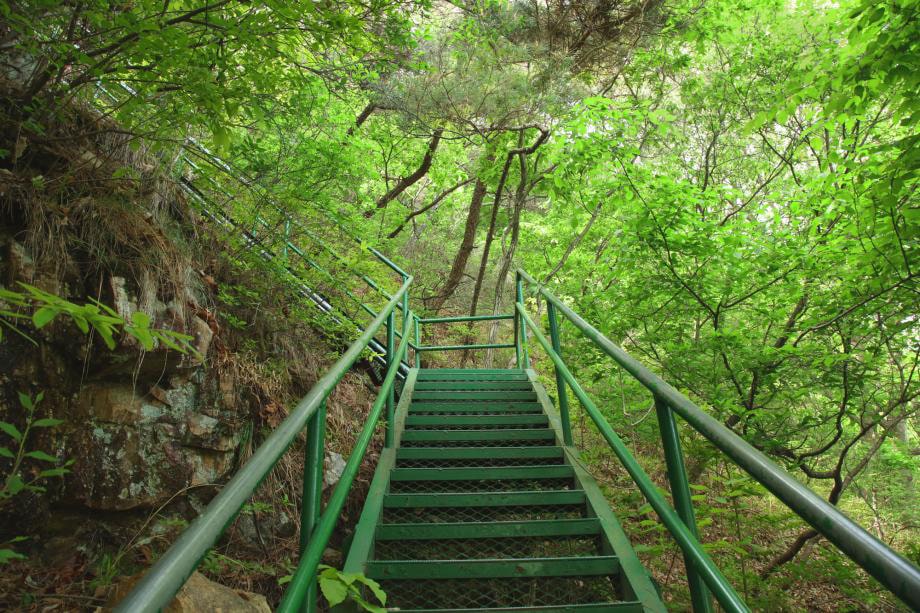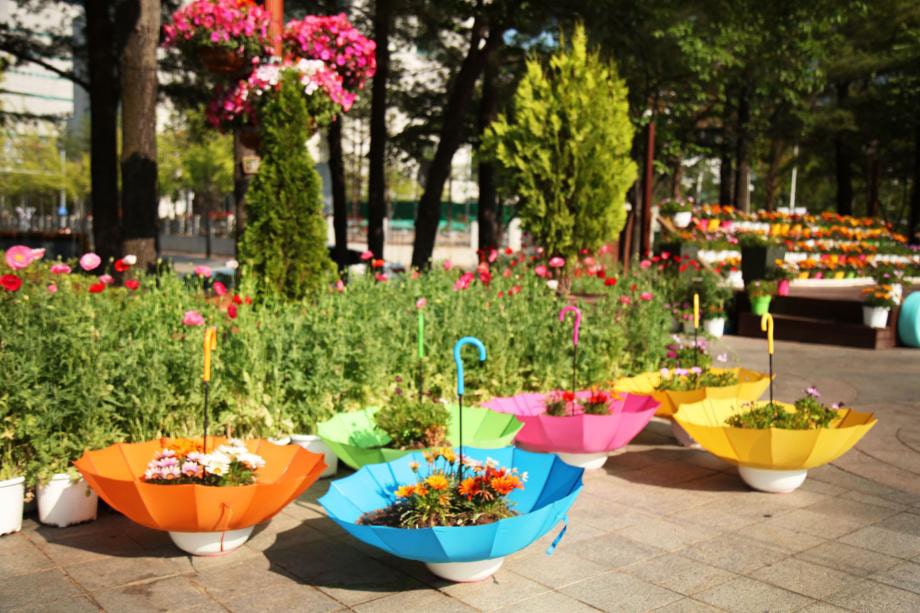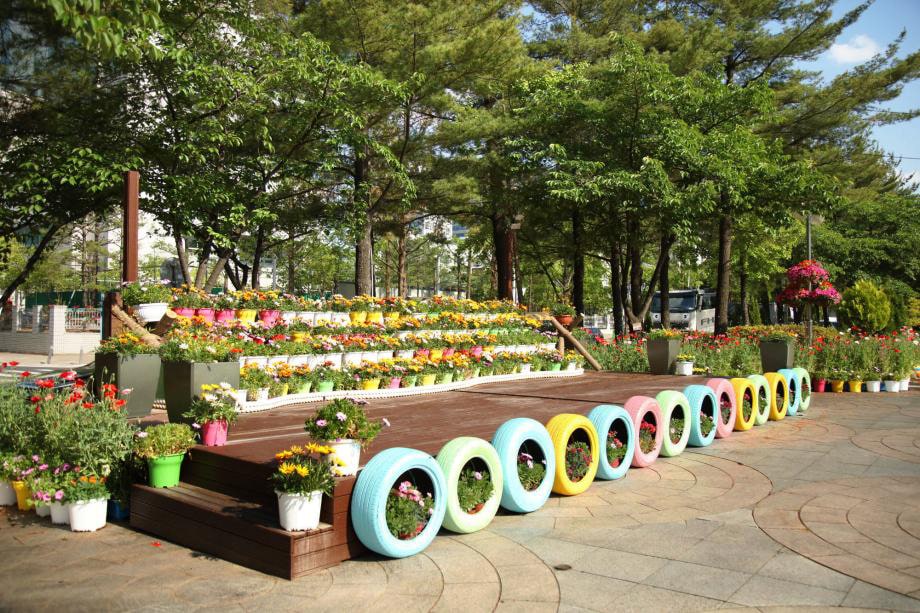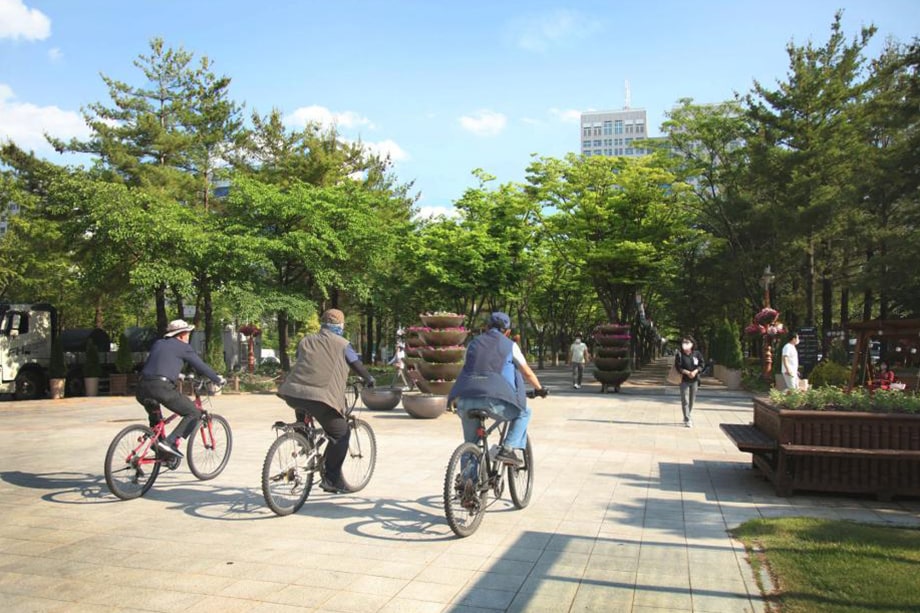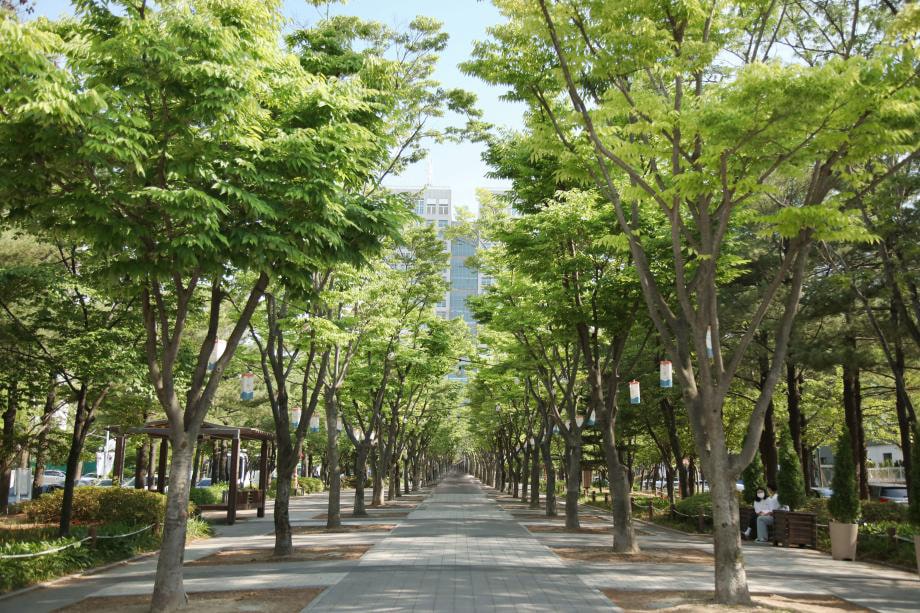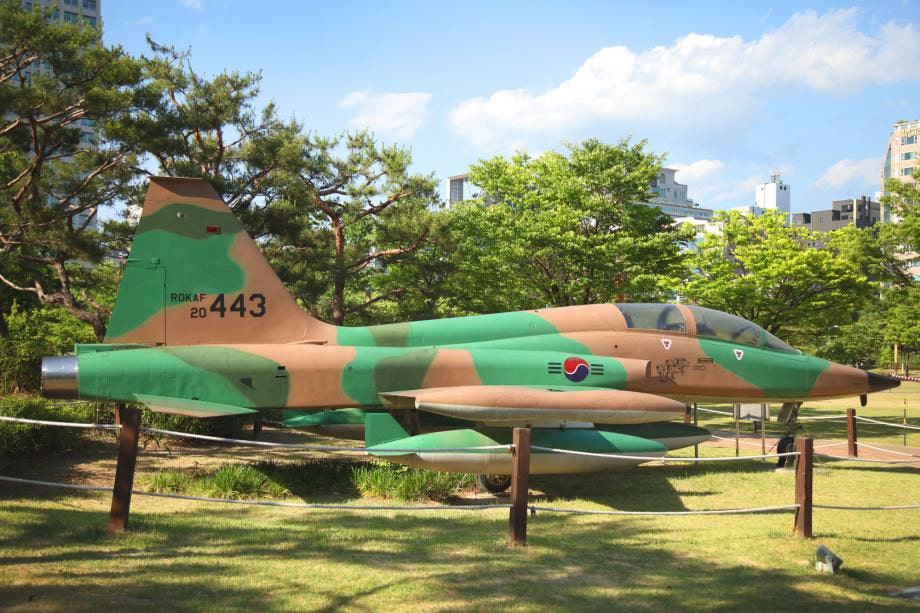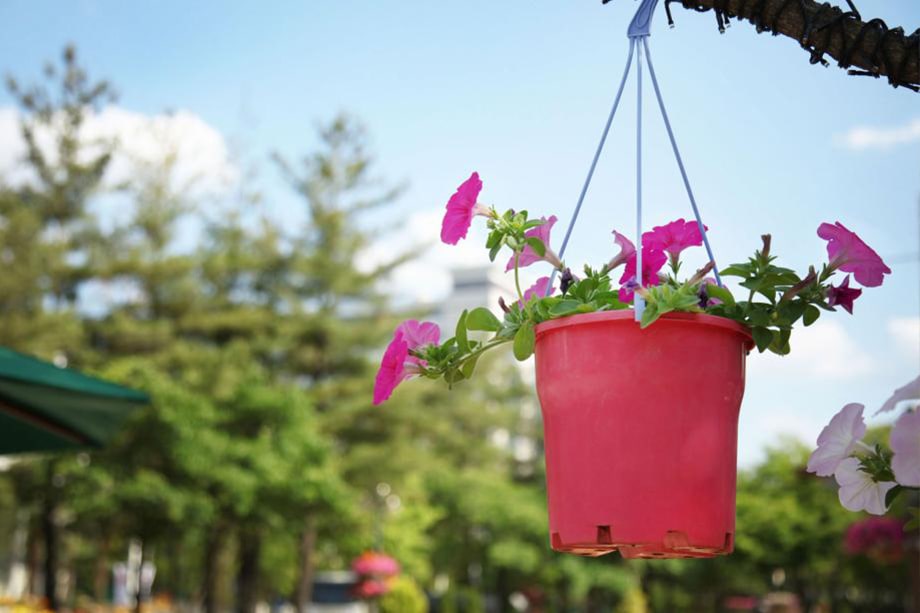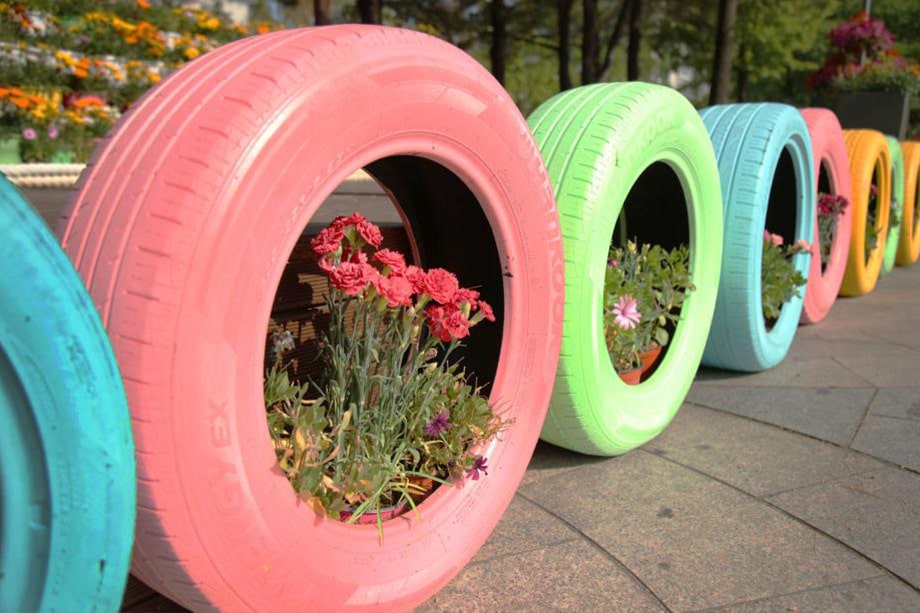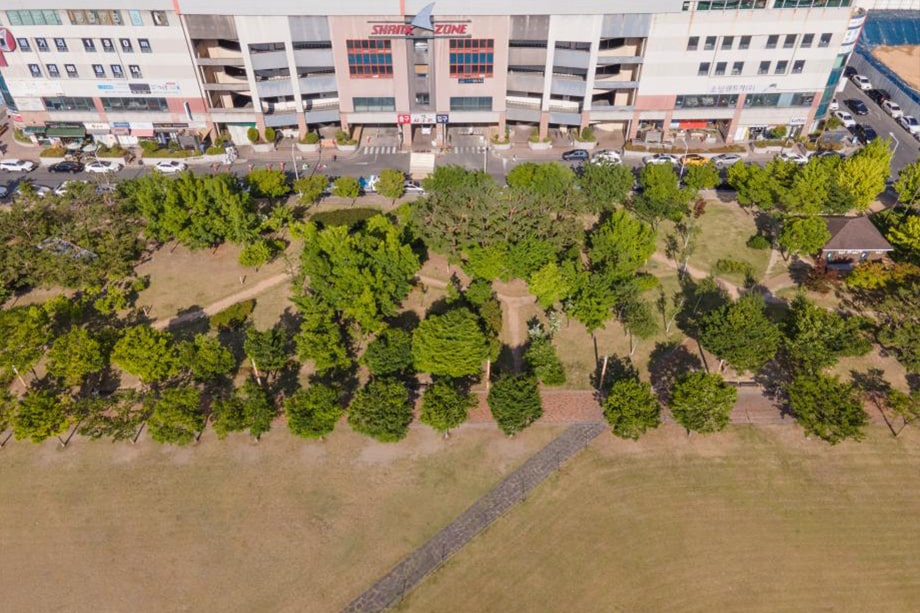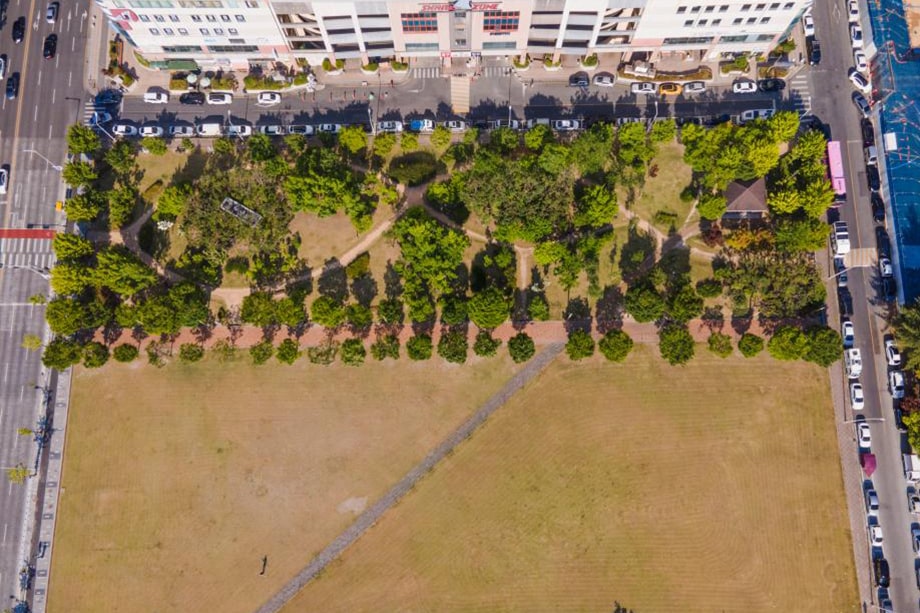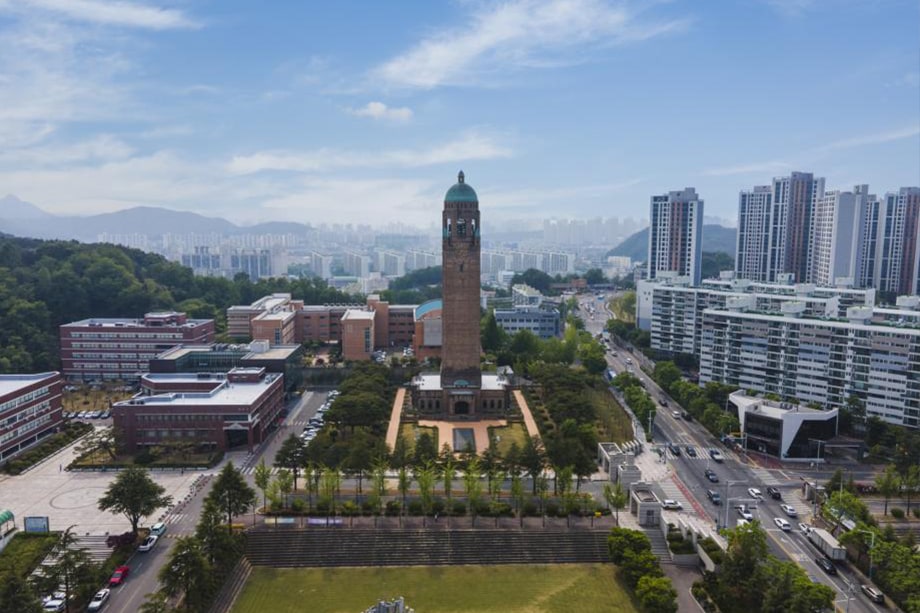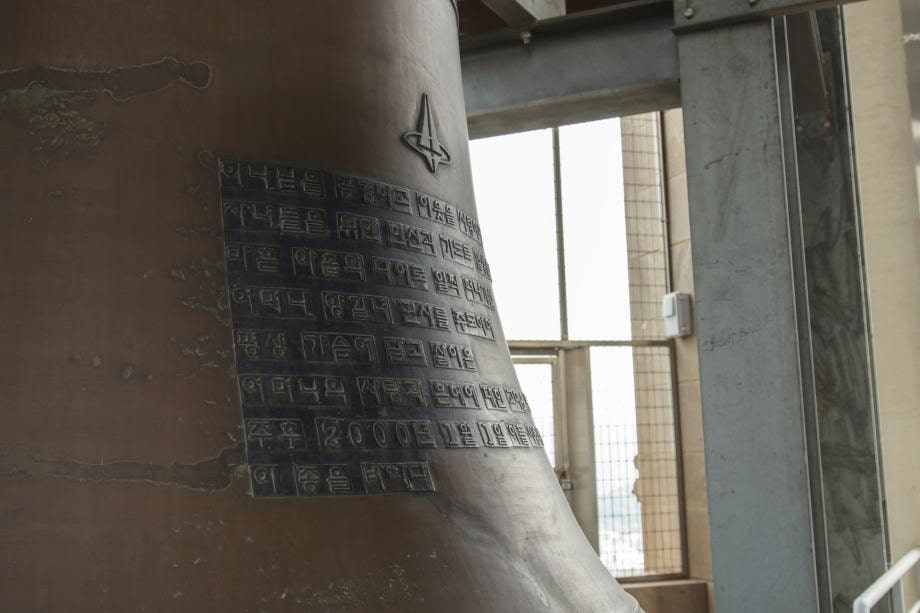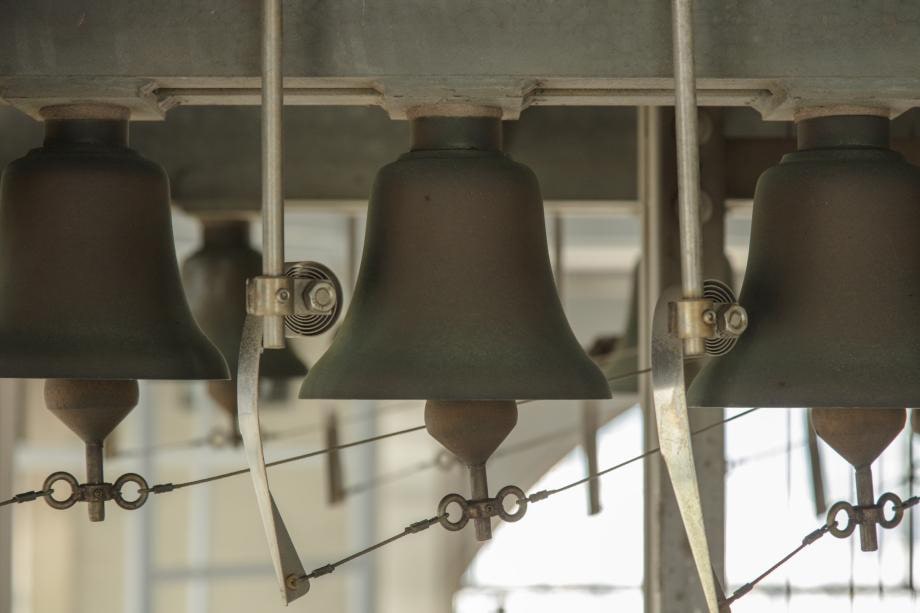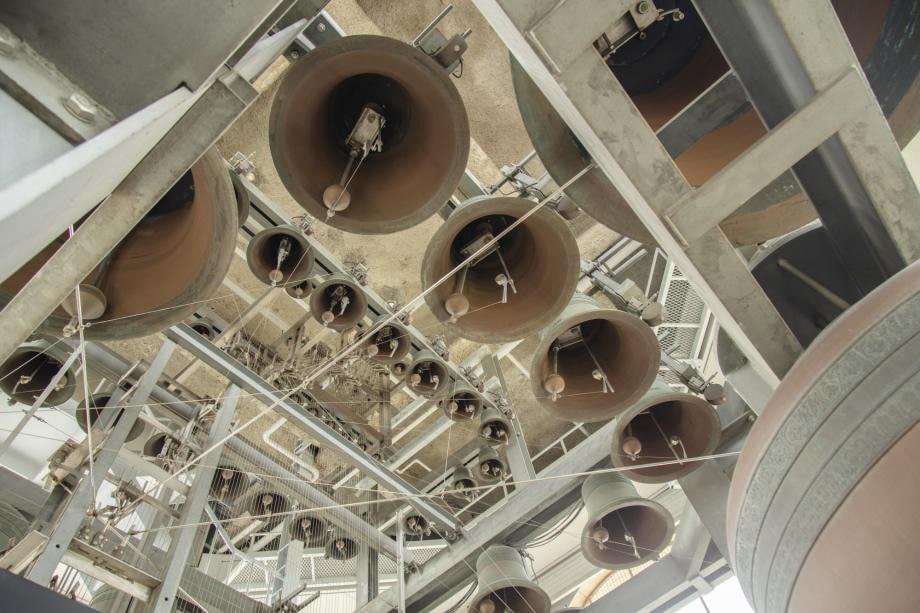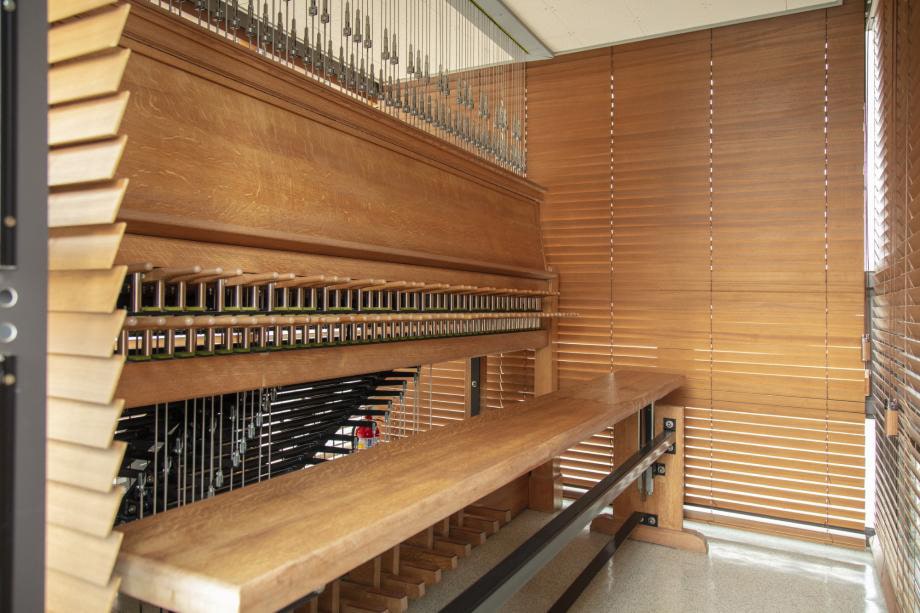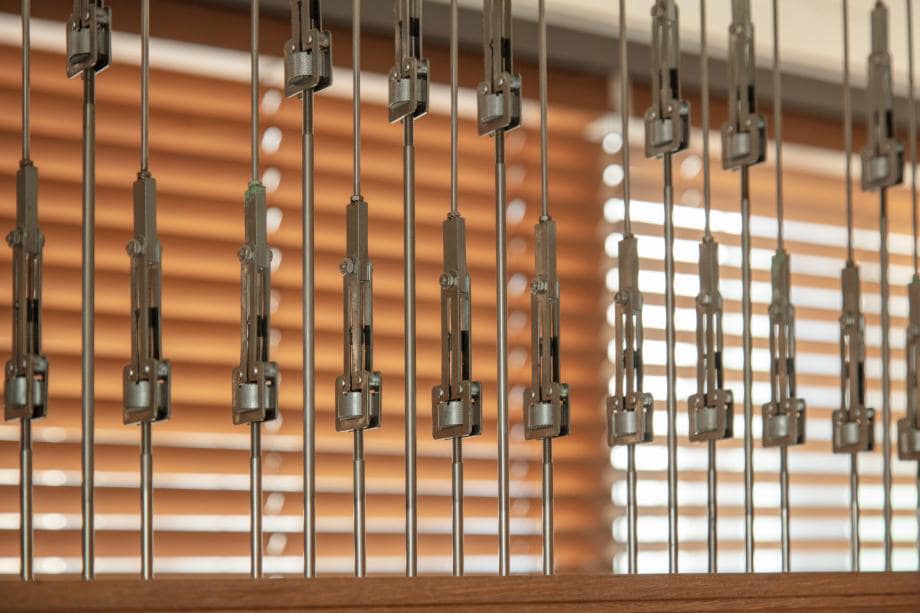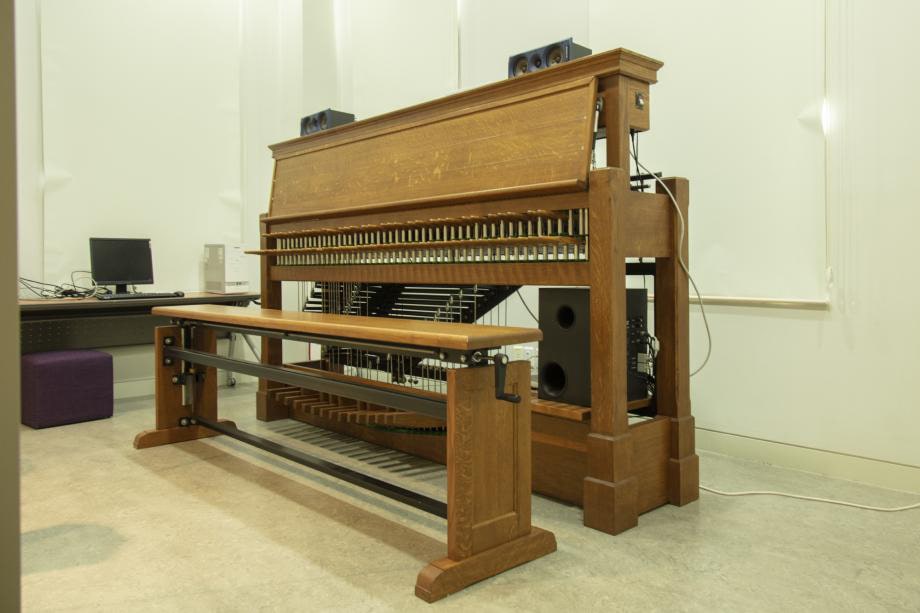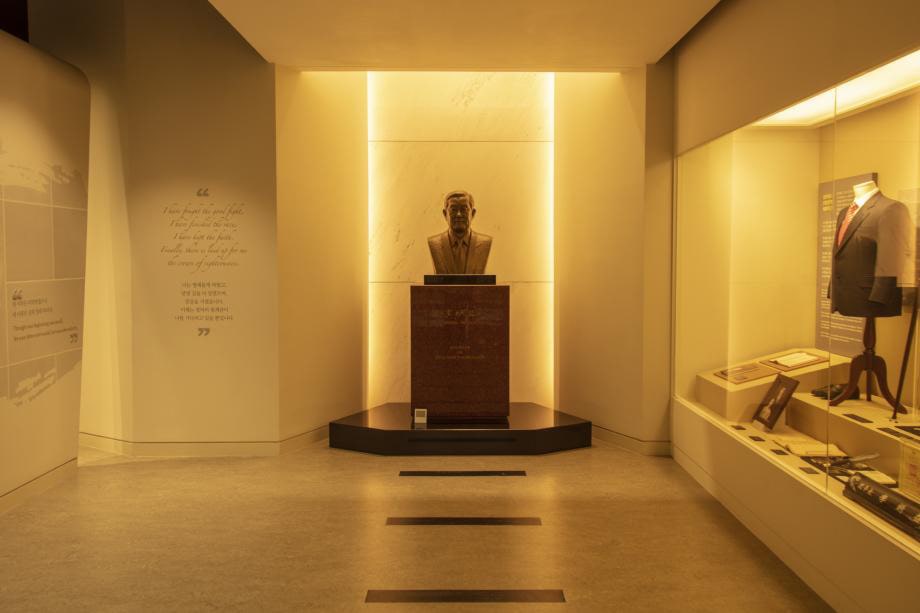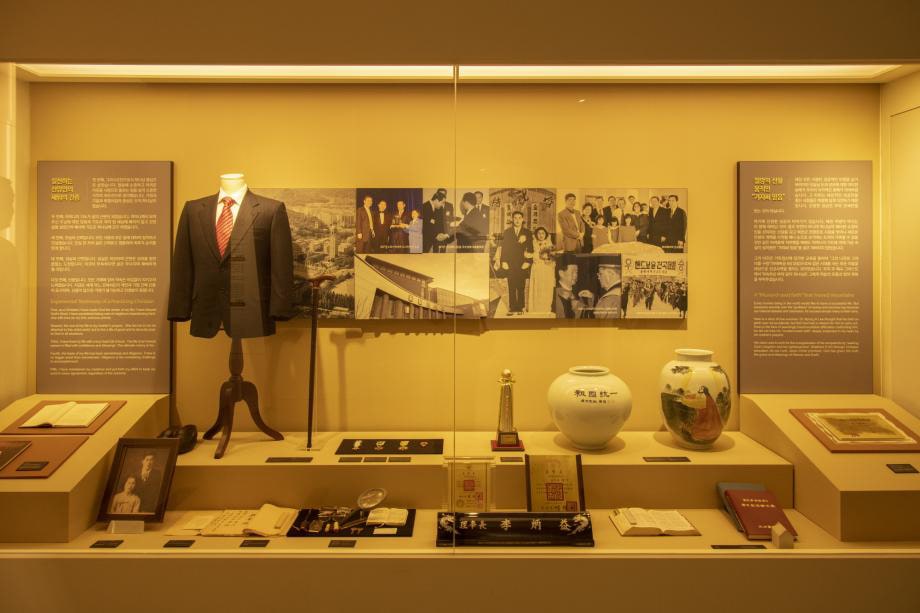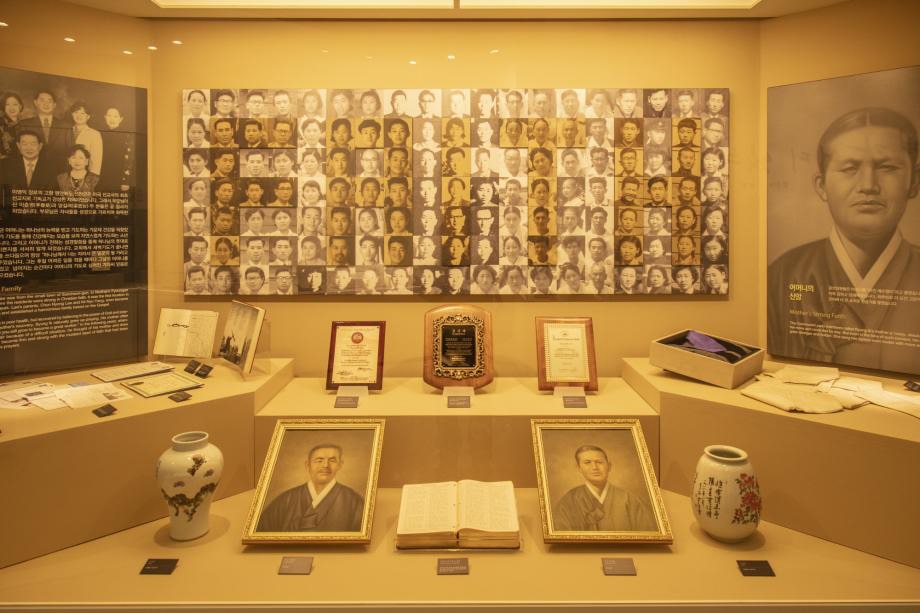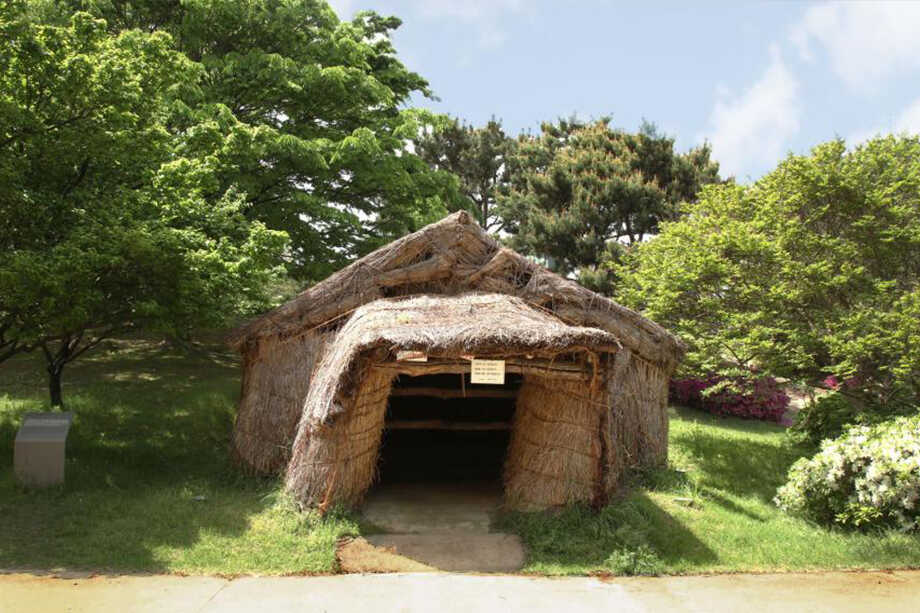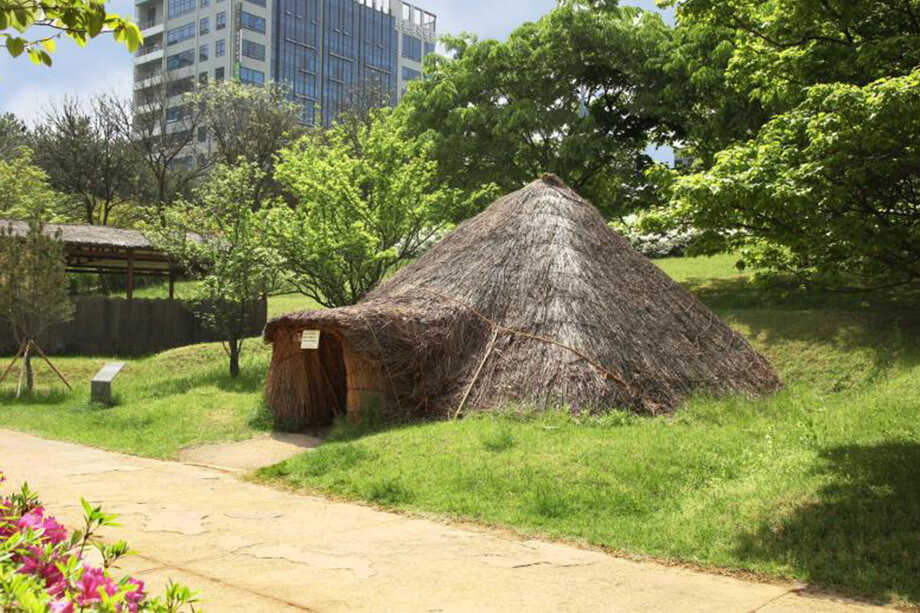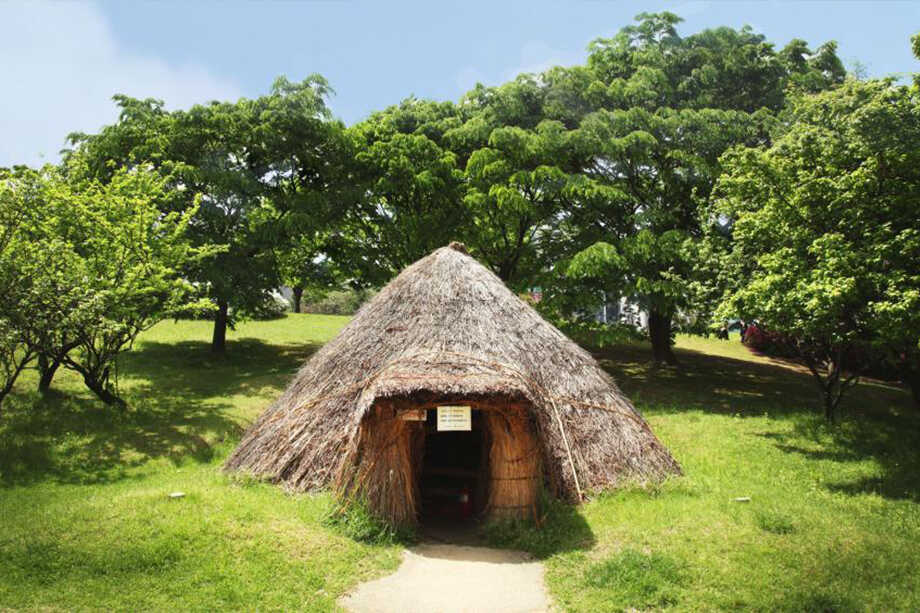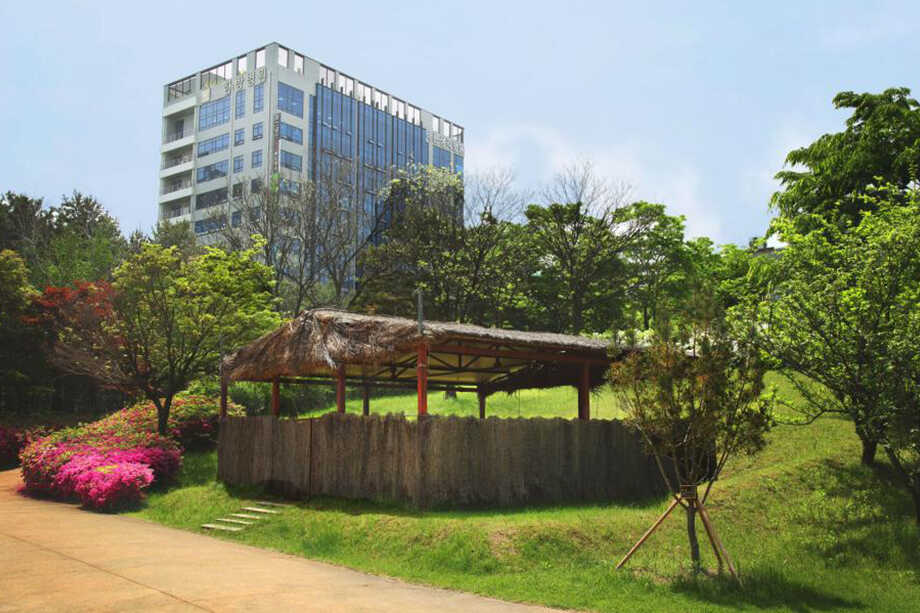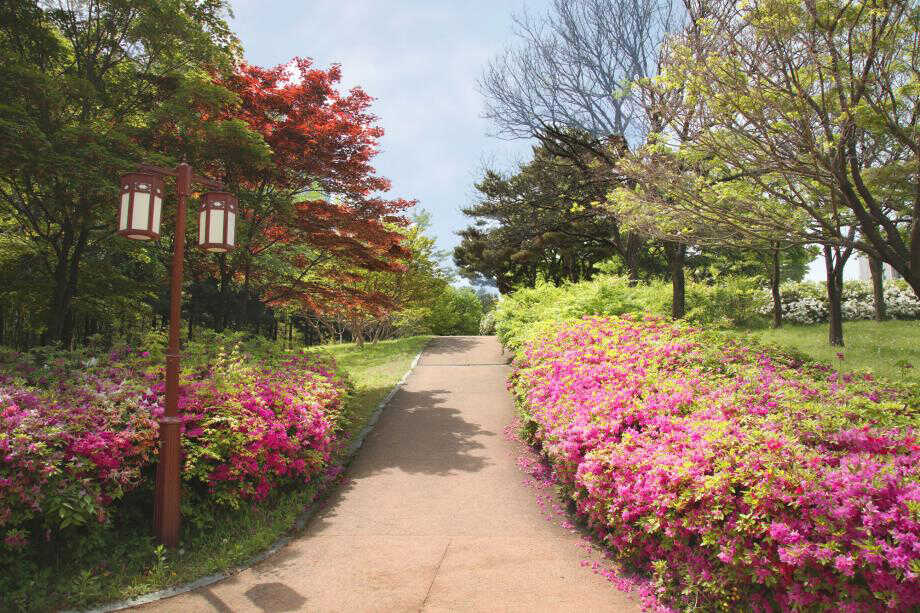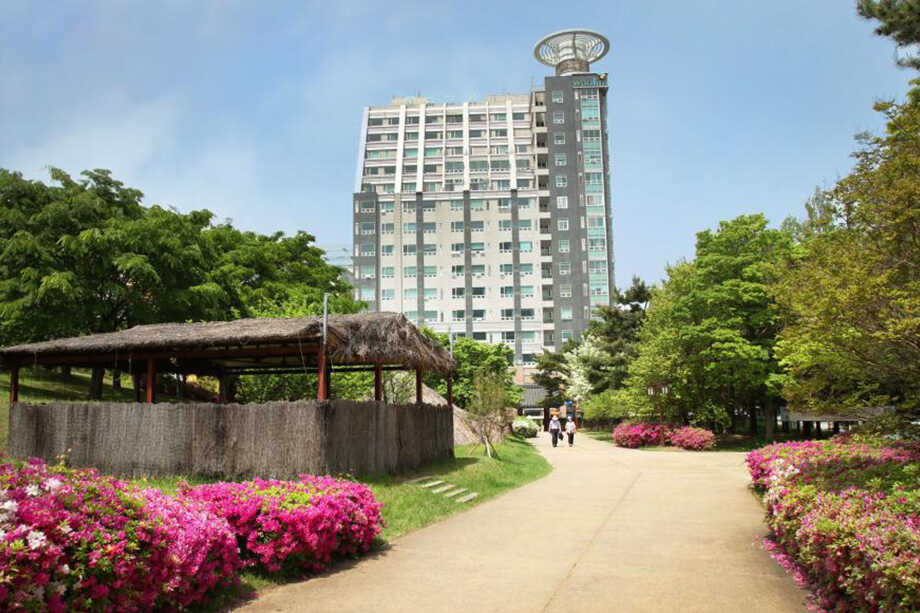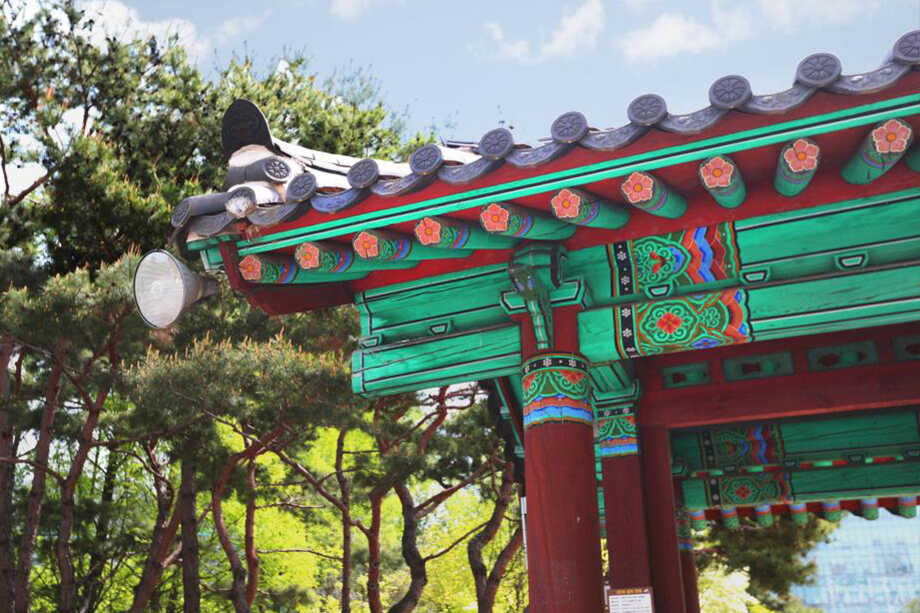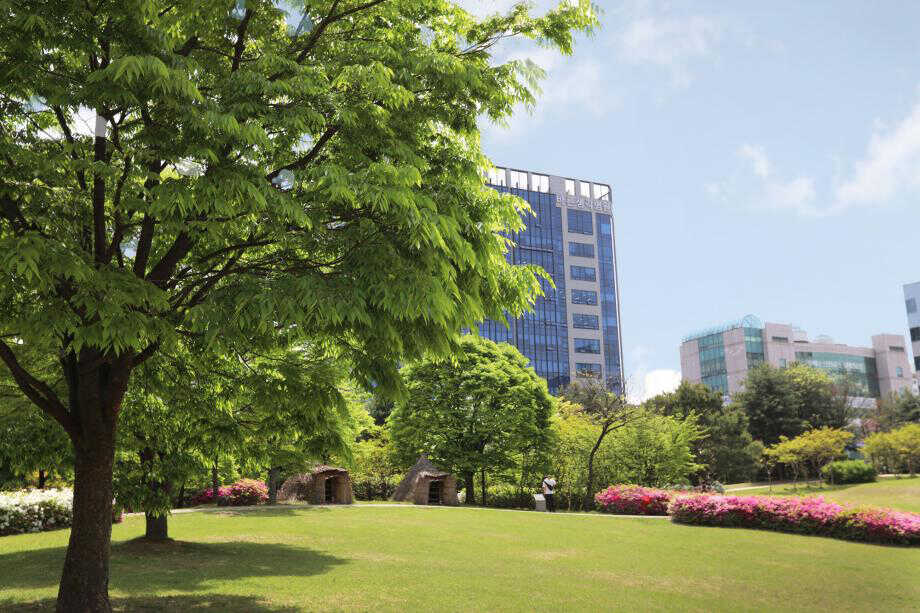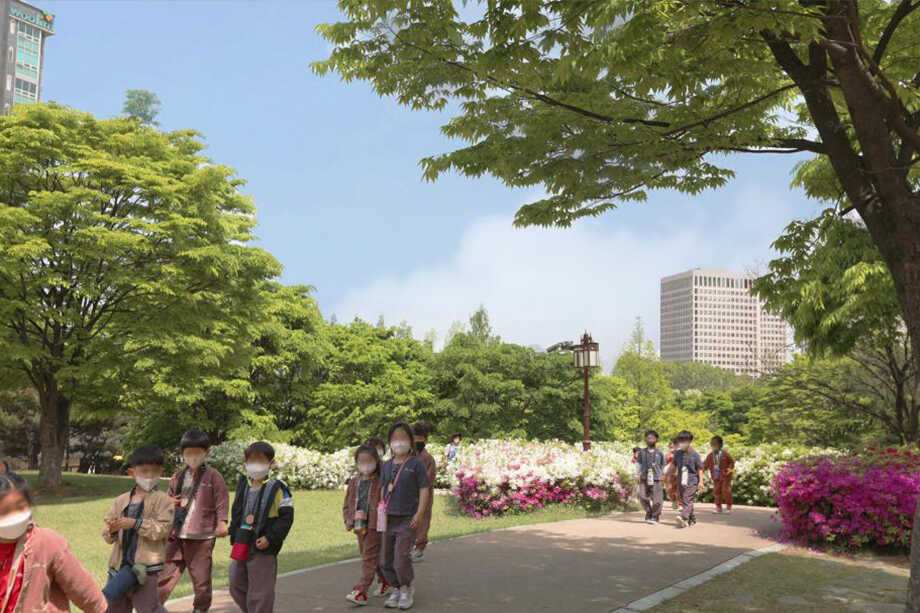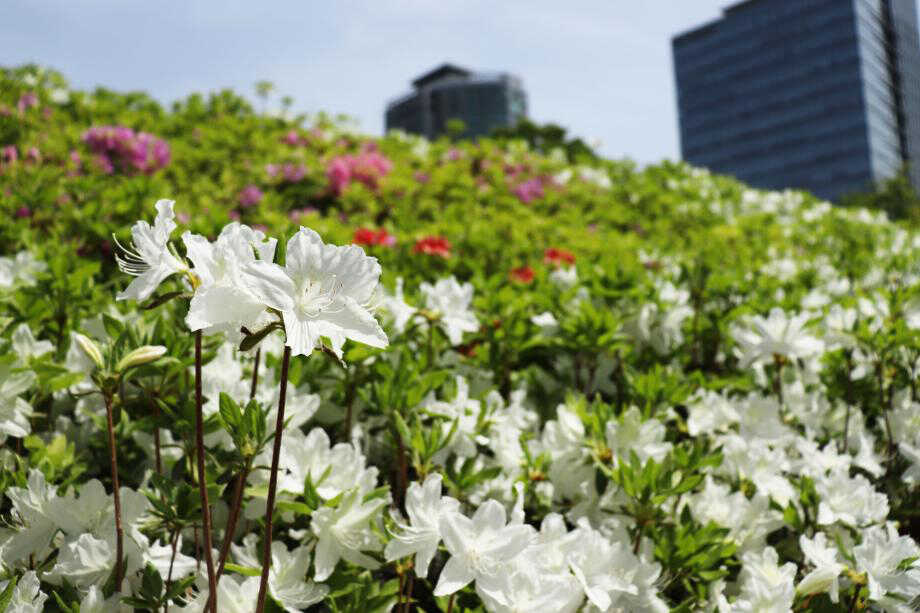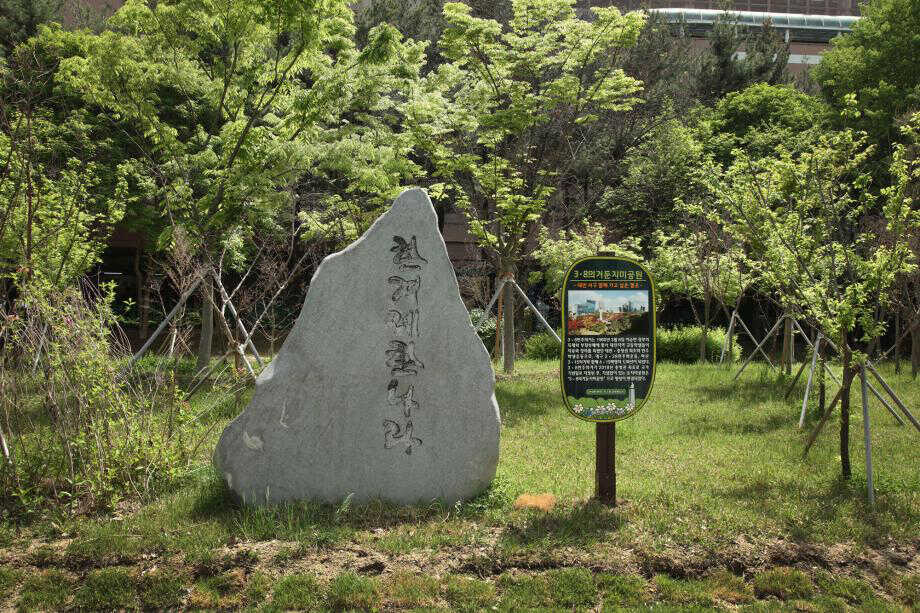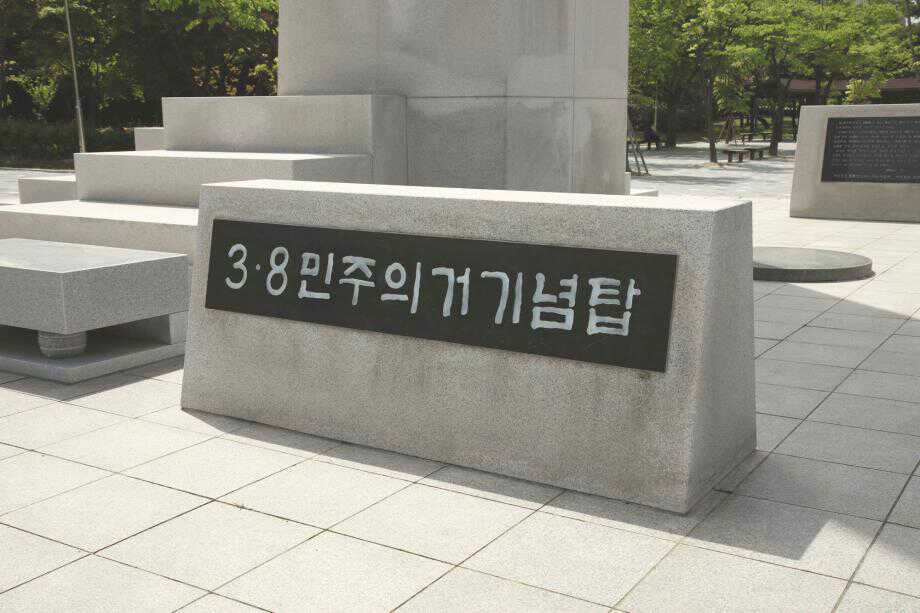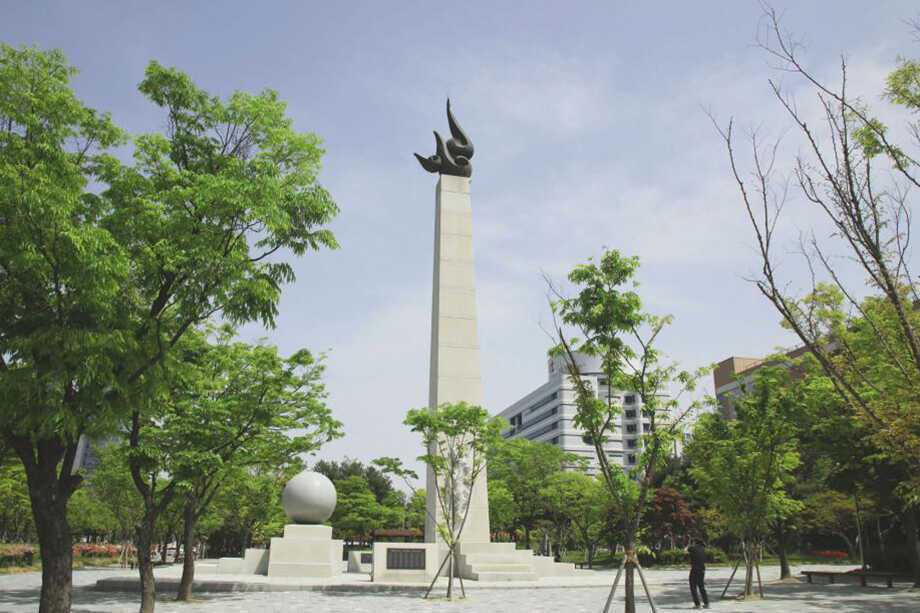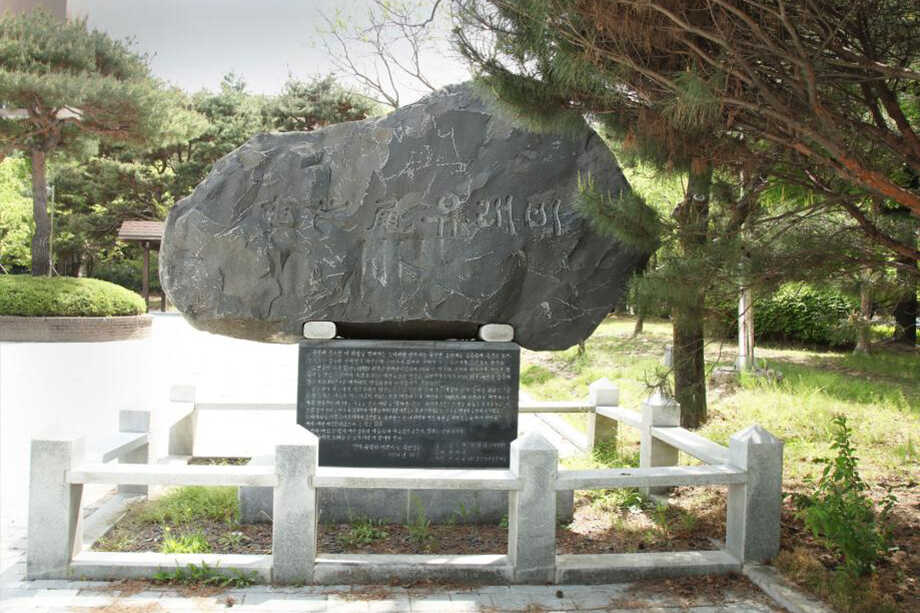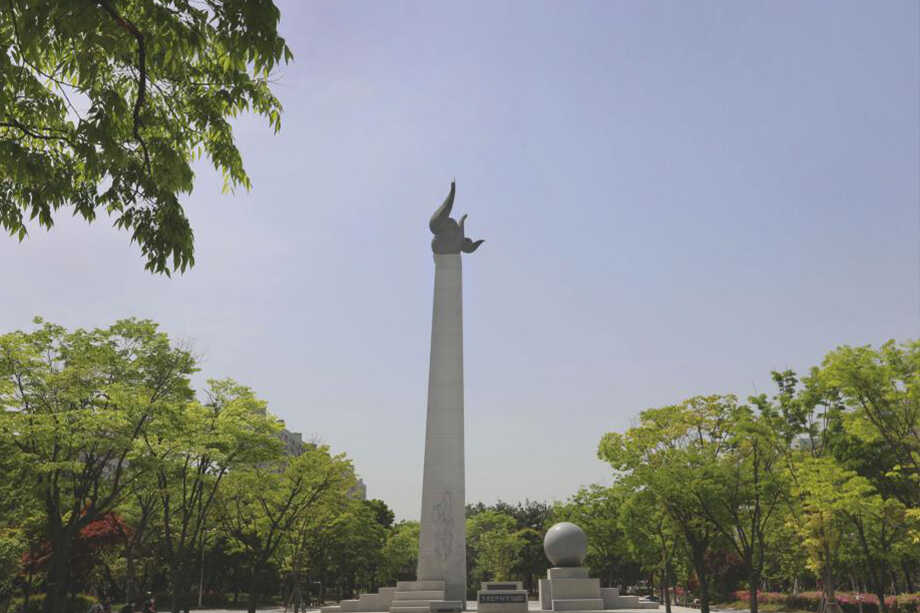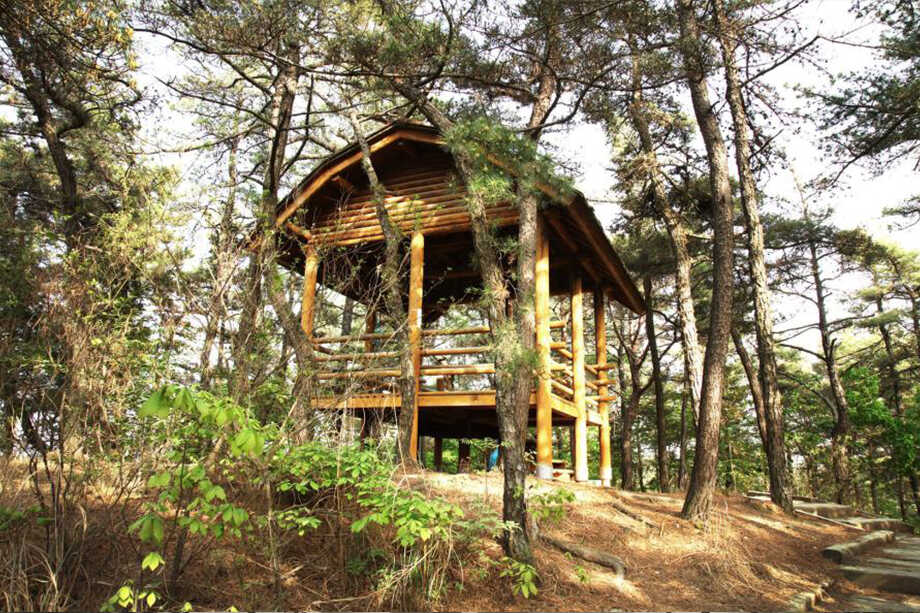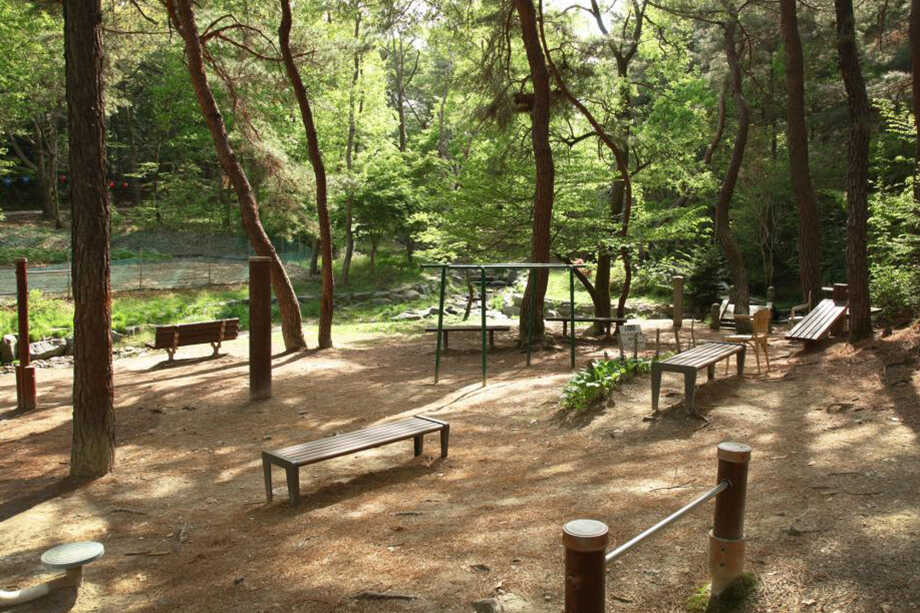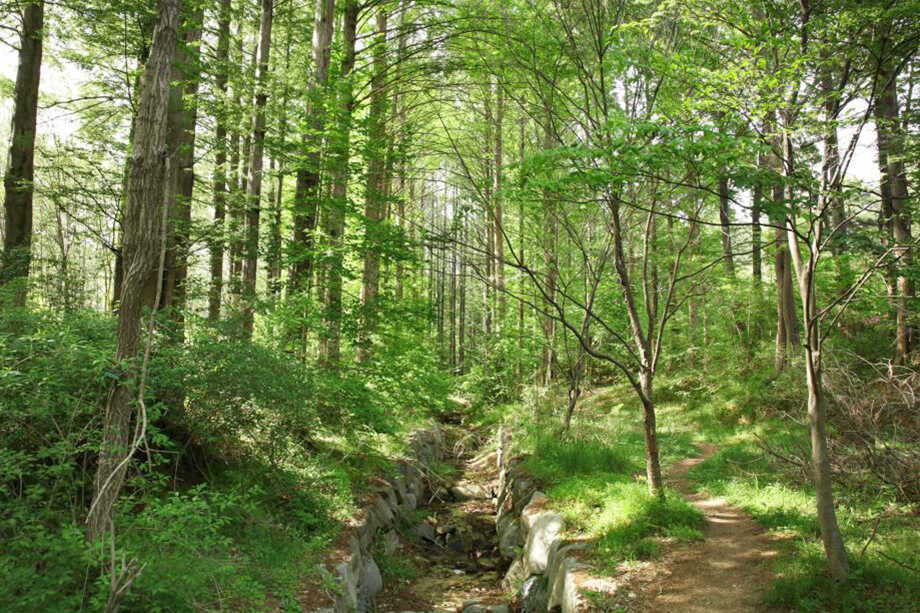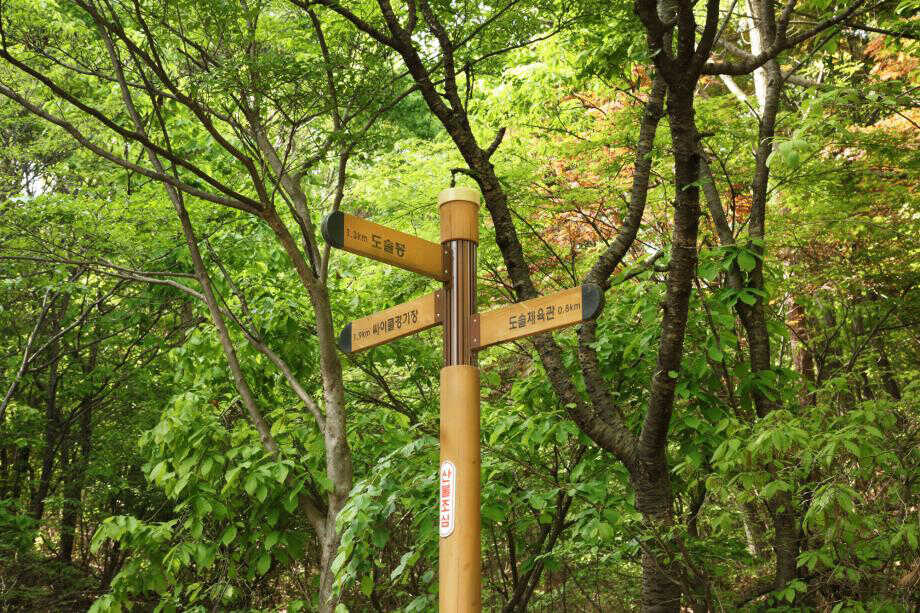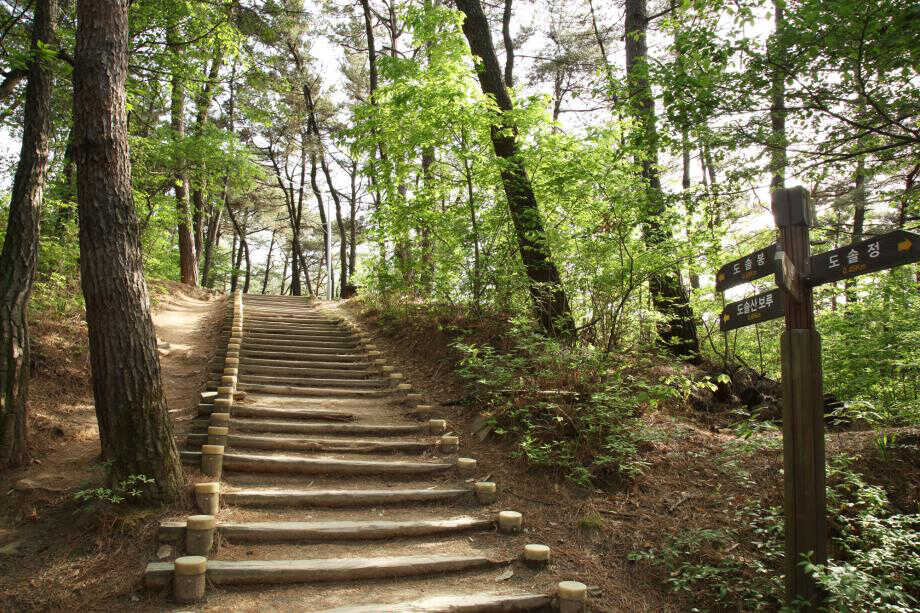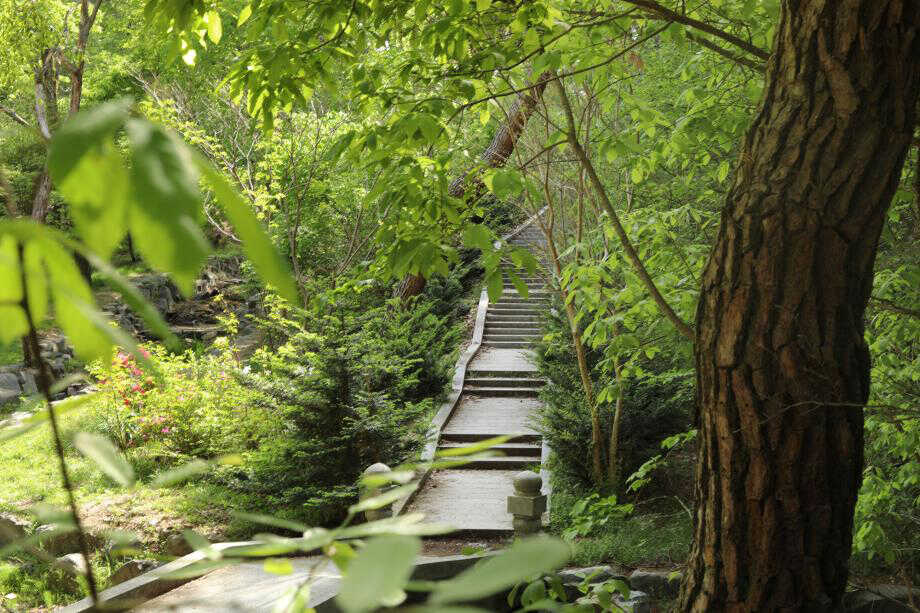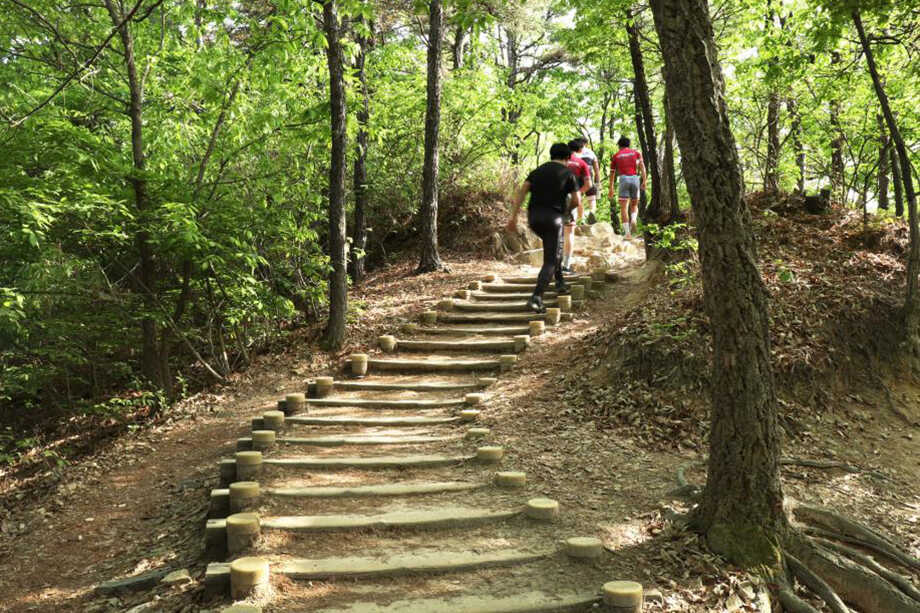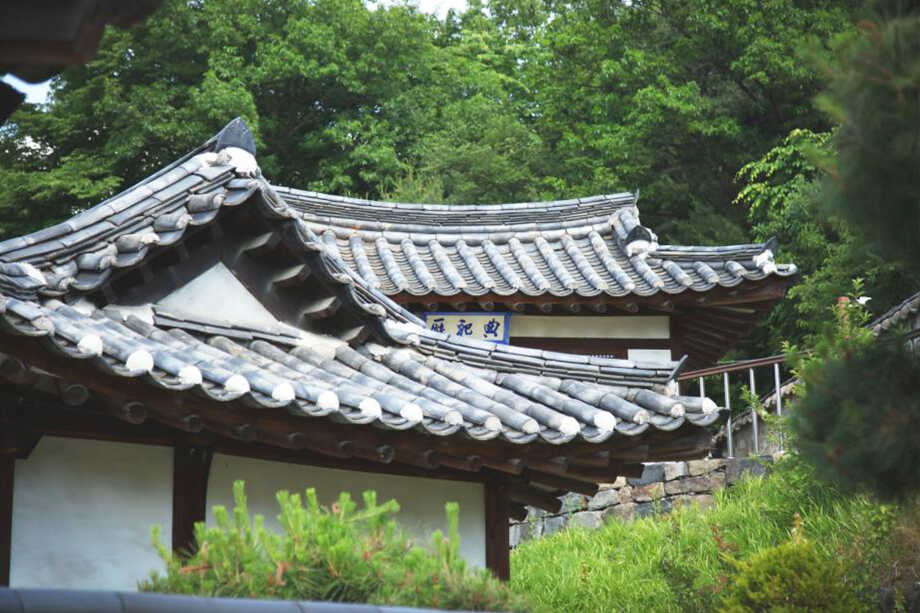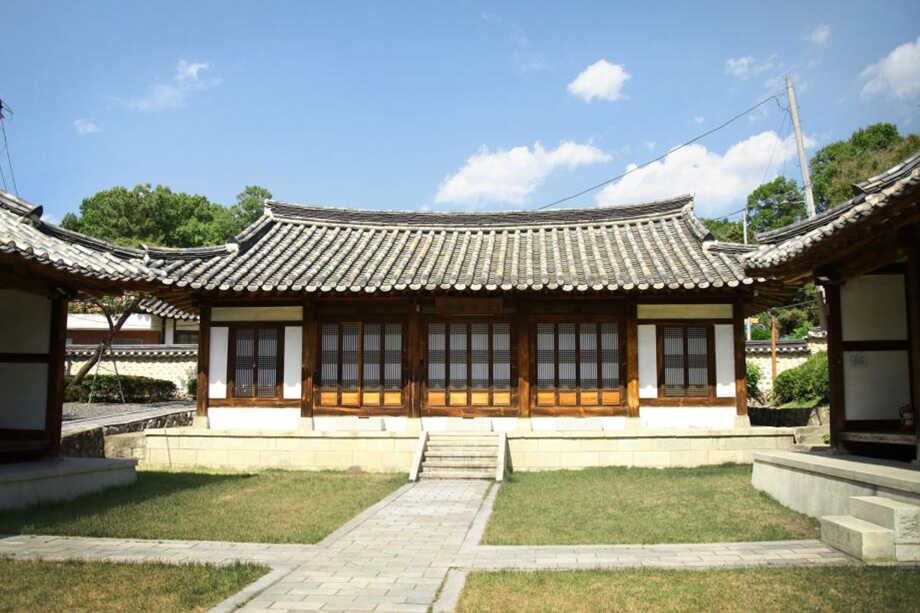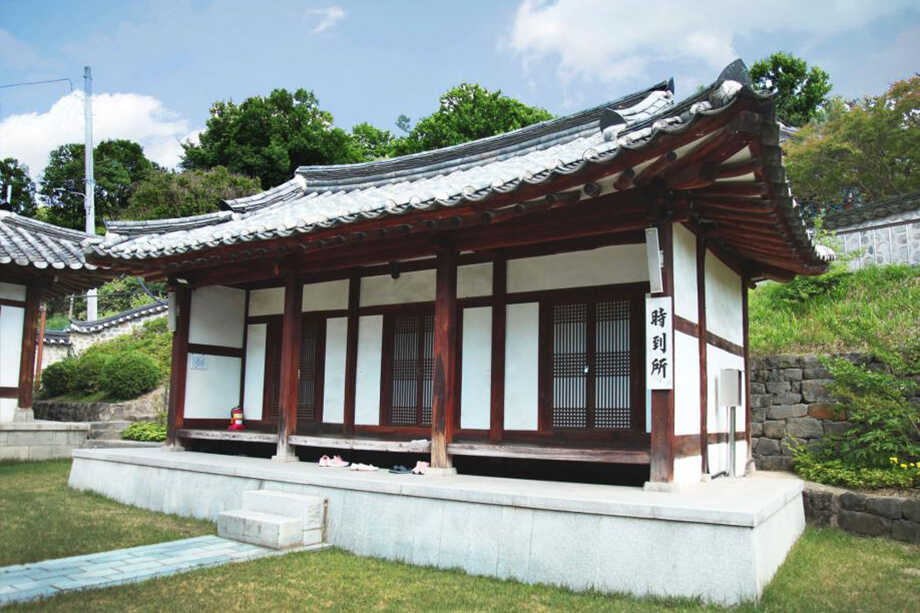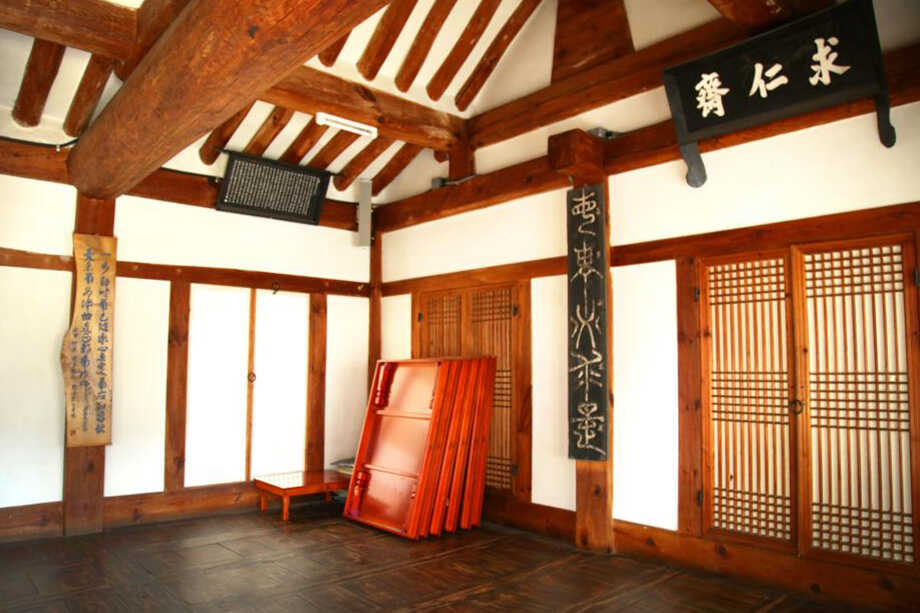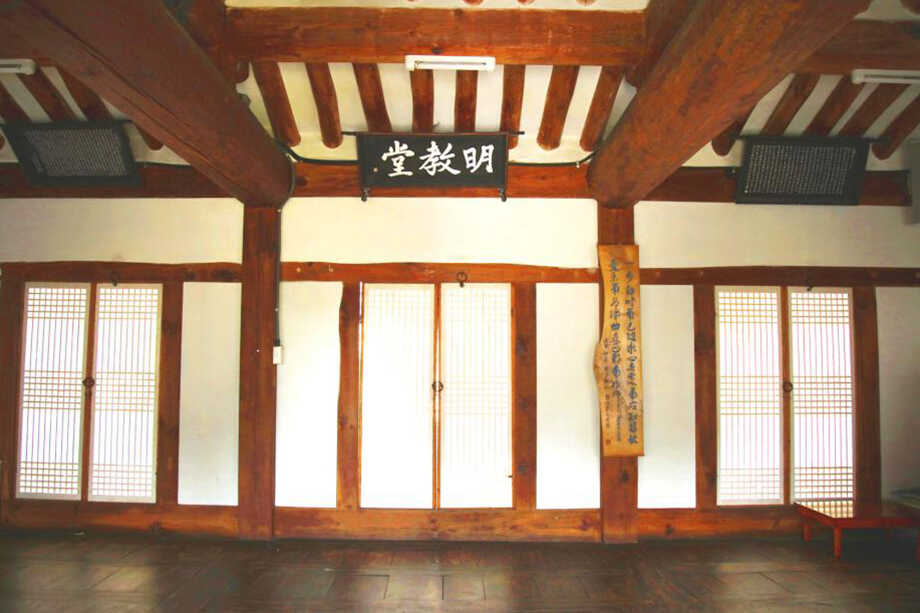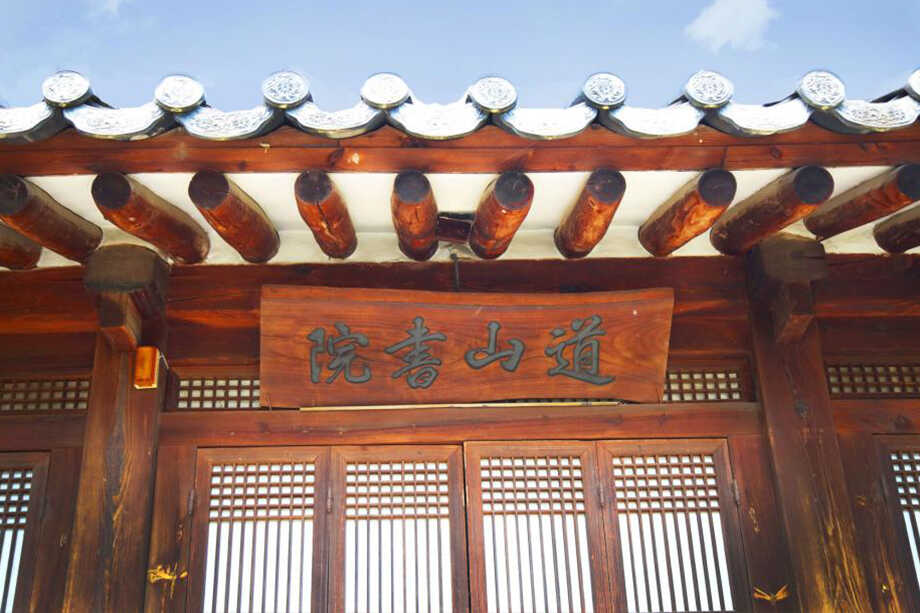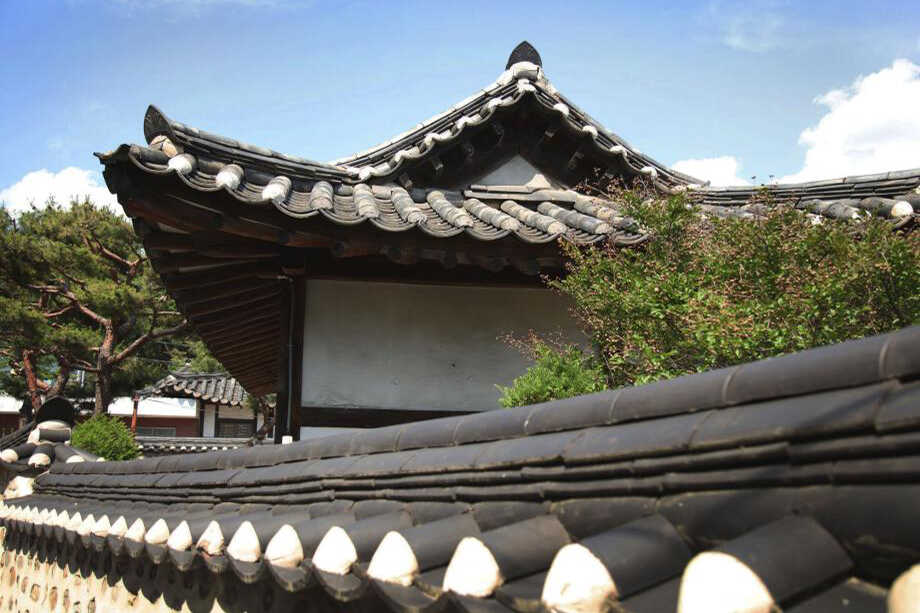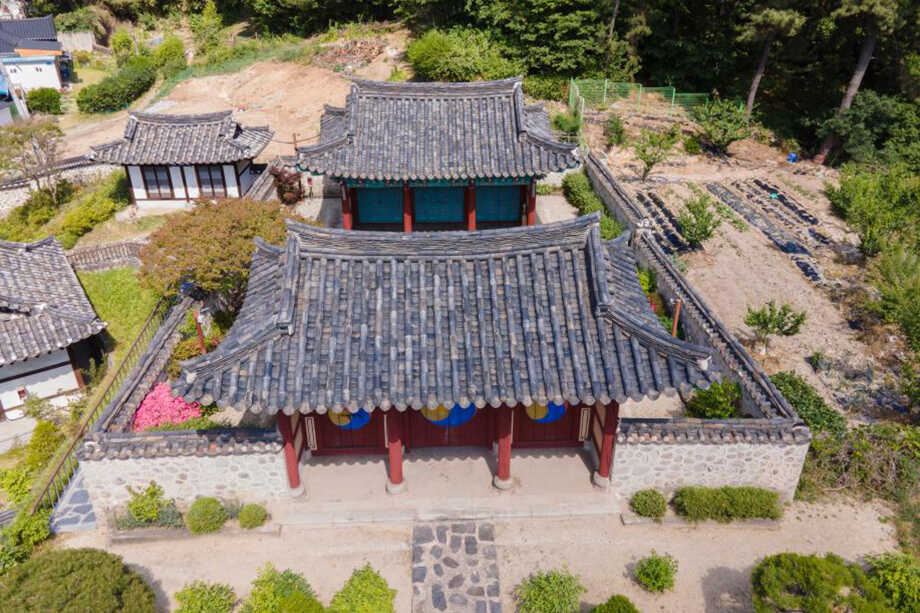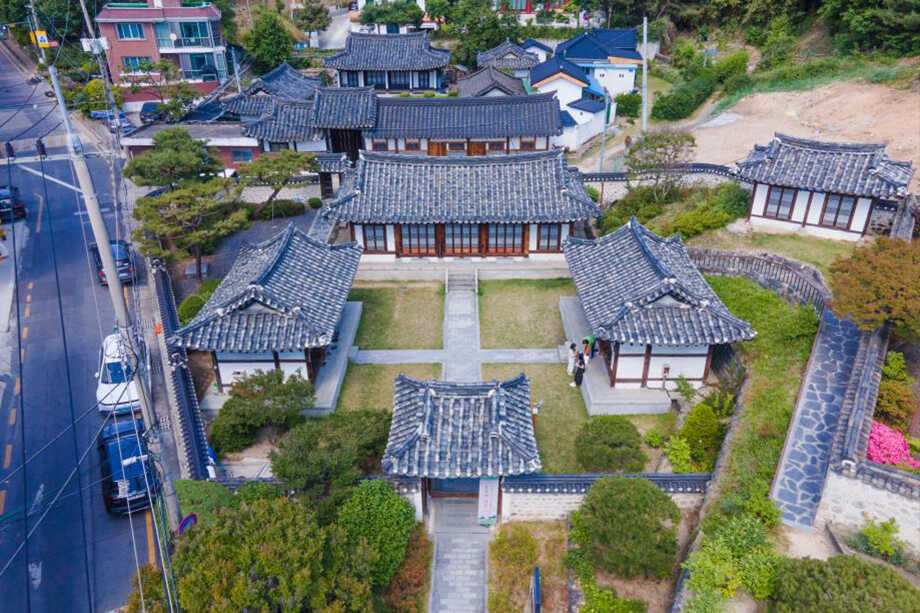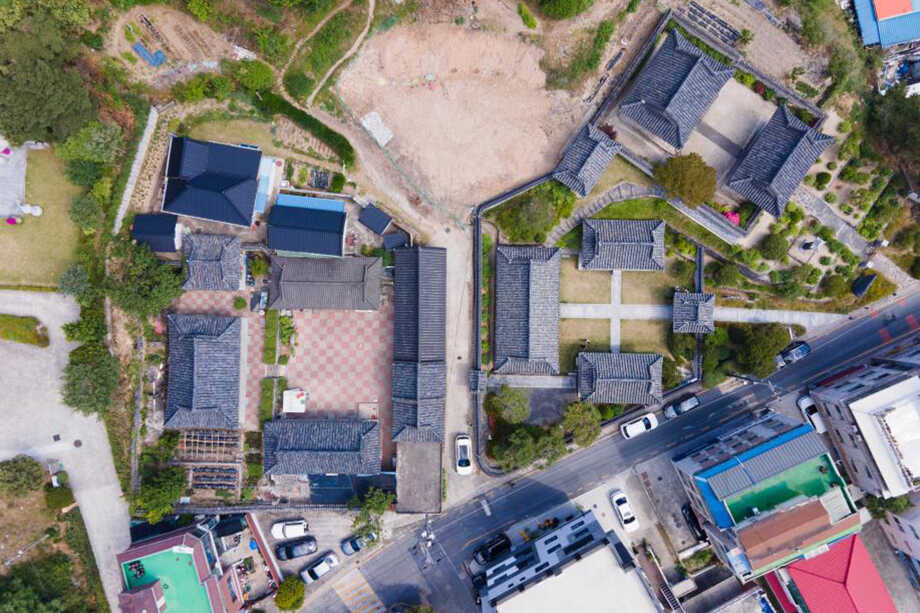Top 10 Attractions
- Jangtaesan Natural Recreational Forest
- Hanbat Arboretum
- Gapcheonnuri-gil
- Gubongsan Mountain
- Boramae Park
- Carillon
- Dunsan Prehistoric Site
- 3.8 Democratic Uprising Dunjimi Park
- Wolpyeong Park
- Dosanseowon Confucian Academy
Jangtaesan Natural Recreational Forest
Jangtaesan Natural Recreational Forest is a place where families come to enjoy forest bathing in a dense metasequoia forest. It was the first recreational forest to be created by the private sector in the country, but it was acquired by Daejeon Metropolitan City in February 2002 and was reopened in 2006 after a remodeling project.
It became even more famous after the then-President of Korea and the first lady spent their summer holidays here in 2018.
The House in the Forest, Forest Cultural Recreation Center, and Forest Training Center are places where visitors can stay overnight in nature, and there is even a car camping site for those who love camping.
The non-accommodation facilities are open to the public for free.
In addition to forest bathing, families and groups can apply for forest experience programs and enjoy a wide variety of activities.
- Address 461, Jangan-ro, Seo-gu, Daejeon
- Hours of operation 00:00 ~ 24:00
Hanbat Arboretum
Hanbat Arboretum, the largest manmade arboretum in an urban area in Korea, is in the vicinity of the Daejeon Arts Center, Daejeon Museum of Art, and other cultural facilities, making it the perfect place to dive into nature and enjoy leisure and culture in the heart of the city.
It consists of Seowon (West Garden), Nammun Square, Dongwon (East Garden) consisting of 19 thematic gardens including the Magnolia Garden, Medicinal Botanical Garden, Rock Garden, and Fruit Tree Garden, and the Tropical Botanical Garden.
The Tropical Botanical Garden (total area 1,600㎡) contains four thematic gardens, Mangrove Garden, Palm Garden, Tropical Flower Garden, and Tropical Rainforest Garden, with about 9,300 tropical and subtropical plants of 198 species, including those of the genus Rhizophora.
The first mangrove garden in Korea where you can appreciate mangrove plants, and about 21 species of mangrove plants are being cultivated.
- Address 169, Dunsan-daero
- Hours of operation 05:00 ~ 21:00
Gapcheonnuri-gil
Gapcheonnuri-gil, which starts at the Expo Bridge in Seo-gu, Daejeon, passes through Gasuwongyo Bridge, Heukseok-dong, and Norubeol, and reaches Jangtaesan Forest Road and Maenocheon Stream, is 39.9 km long and consists of three trails.
It is a scenic path where you can take in the striking sight of the natural environment and traditional cultural sites of rural areas in the city.
The Gapcheonnuri-gil Pump Track and MTB Bike Theme Park Project was selected in the final round of the 2020 Bicycle City Branding Support Program organized by the Ministry of the Interior and Safety with the Gogok-dong area as the project site. This project, scheduled to be completed this year, will provide a place for cyclists to enjoy recreational sports in the city.
- Route Expo Bridge ~ Gasuwongyo Bridge ~ Heukseok-dong ~ Norubeol ~ Jangtaesan Forest Road ~ Maenocheon Stream
Gubongsan Mountain
It is a 264m-tall mountain with many fascinating rock forms that consists of nine summits – hence the name, “Gubongsan,” which means “9-summit mountain.”
Surrounded by Gwanjeo-dong, Gasuwon-dong, Goegok-dong, Heukseok-dong, and Bonggok-dong, Gubongsan Mountain offers a panoramic view of Norubeol and the city of Daejeon from Gugakjeong Pavilion on a clear day.
- Address Gasuwon-dong, Seo-gu, Daejeon ~ Gwanjeo-dong area
Boramae Park
Boramae Park is a famous park in downtown Daejeon that covers grounds from the front of Daejeon Seo-gu Office, past Daejeon City Hall, and all the way to Tanbang Station. It is a “healing spot” that hosts the Seo-gu Healing Art Festival and Boramae Christmas Tree Festival each year.
It was chosen as one of the 12 most walkable areas in Daejeon, and it is called the “Garosu-gil (tree-lined street) in front of City Hall.”
As the former site of the air force facilities, it currently has a fighter jet model on display, with all other military facilities removed in the 90s during the development of Dunsan.
- Address 589, Tanbang-dong
Carillon
The carillon is found inside the 78m-high Hyecheon Tower at Daejeon Institute of Science and Technology and is composed of 78 bronze bells and weighs about 50 tons. It is in the Guinness World Records as the largest carillon in the world.
The carillon of Hyecheon Tower is sometimes played manually using fists and feet, and pre-registered songs are also played at designated times through an automated system.
During automated performances, 37 bells specially equipped with electromagnets on the outside are used.
The Hyecheon Tower Carillon music, which resonates up to a radius of 3 km, is called Heavenly Music or the Music of the Tower, providing a sense of peace and joy to the students of Daejeon Institute of Science and Technology as well as those living in the neighborhood.
- Address 100, Hyecheon-ro
Dunsan Prehistoric Site
The Dunsan Prehistoric Site became known to the world when it was first covered by the Chungcheong Ilbo on March 18, 1991.
An archaeological project was carried out from early May to mid-September 1991 by the Chungnam National University Museum and the Institute of Korean Prehistory.
As a result, the ruins of a house from the Bronze Age were excavated in the southeast of the top of the ridge (61.8 m), while ruins from the Paleolithic Age and the Neolithic Age were found in the east and on the lower northern hills, respectively.
Preservation measures for the ruins were discussed, but unfortunately, the original terrains could not be preserved, as it was discovered during a housing site development project.
After the archaeological project was completed, a part of the hill was cut, while the Bronze Age house site was moved to the current location, which is adjacent to the site, and it was turned into a prehistoric park and mineral spring site.
- Address 9, Daedeok-daero 317beon-gil
- Hours of operation 06:00 ~ 21:00
3.8 Democratic Uprising Dunjimi Park
The March 8 Democratic Uprising was the first student-led democratic movement in the Daejeon and Chungcheong area in which local high school students sought freedom and justice against the dictatorship and corruption of the Rhee Syng-man government on March 8, 1960. Together with the February 28 Daegu Democracy Movement and March 15 Masan Uprising, the March 8 Democratic Uprising in Daejeon became the fuse for the April 19 Revolution.
After the March 8 Democratic Uprising was designated as a national memorial day, which was the first for the Chungcheong region, in 2018, Dunjimi Park with a memorial tower was renamed 3.8 Democratic Uprising Dunjimi Park.
- Address 953, Dunsan-dong
Wolpyeong Park
Wolpyeong Park sprawls over five dong including Wolpyeong-dong, Galma-dong, and Jeongnim-dong, covering 3.99 million ㎡ in total area. It is an ecological park that is called the “lung of Daejeon.” It contains Dosol Gymnasium and offers a scenic view of Naewonsa Temple and the splendid natural surroundings.
There are various trails with guide maps throughout the park, making it a perfect place to enjoy a pleasant stroll for those who like to walk.
- Address Doma-dong area
Dosanseowon Confucian Academy
The confucian academy was founded to honor Manhoe Kwon Deuk-gi and his son, Tanong Kwon Si, for their academic achievements and virtues. It was designated as Daejeon Cultural Heritage Material No. 3 (March 18, 1998).
- Address 8, Namseon-ro
- Hours of operation 09:00~17:00 on weekdays (closed on Sat., Sun., and holidays)
